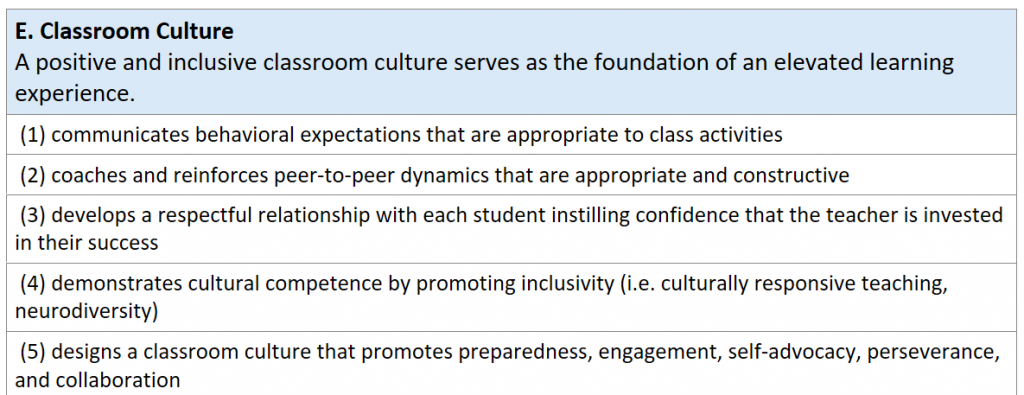
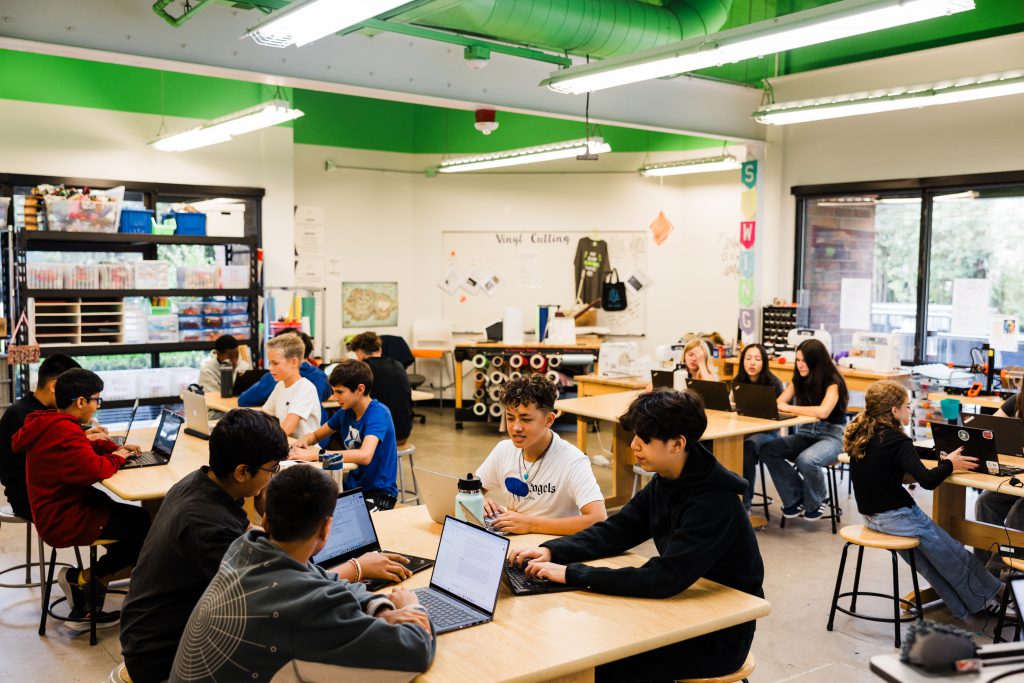
(1) Communicates behavioral expectations that are appropriate to class activities
When I was in college taking my classes in the education program, I was introduced to one of my very best friends as an educator: Harry Wong’s book The First Days of School.
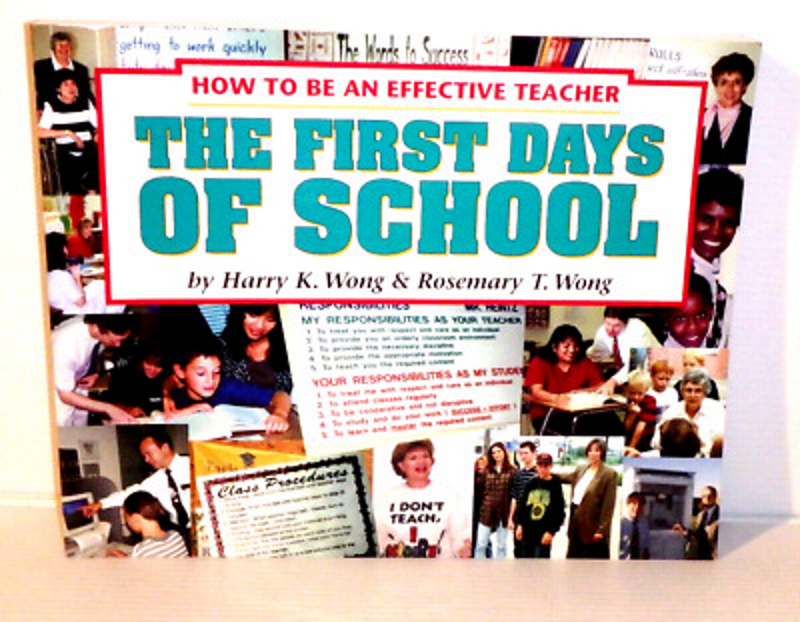
The premise of this book is to set yourself, and students, up for success in the first days of school by setting up procedures and behavioral expectations right away. Then, spend time practicing those procedures until they become habits for everyone in the classroom. As Harry Wong says:
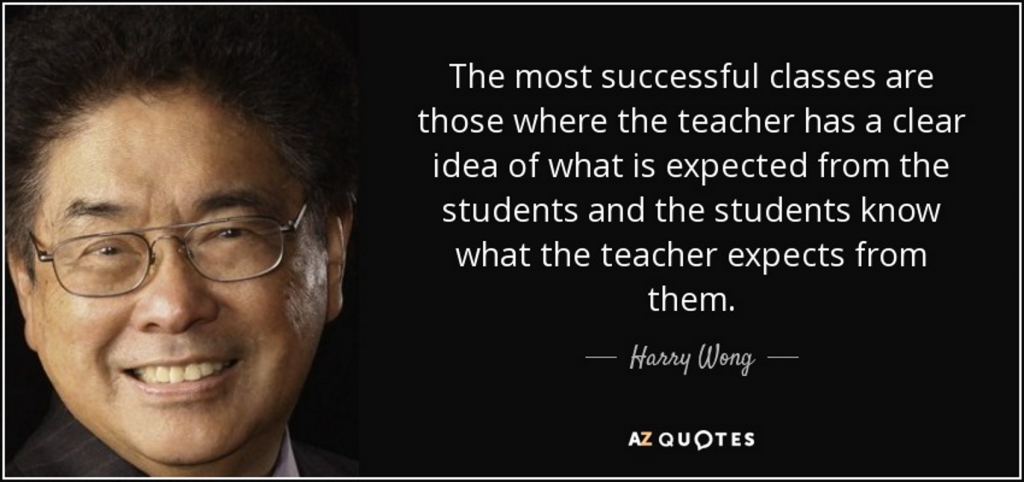
I’ve used the teachings in this book as my guide in all of my almost 20 years as an educator. The times when I have struggled with the most with classroom management, I can almost always tie it back to my failure to explicitly teach expectations and procedures and/or not communicating what the consequences of not meeting these expectations are. Generally speaking, I have a basic set of expectations that I call Responsible Actions here at EPS, which are discussed on the first day, that students are pointed towards frequently and which they earn a grade for each week. Below you can see snips of how I describe Responsible Action in my syllabus, as well as the rubric I use to assess students on their RA each week.

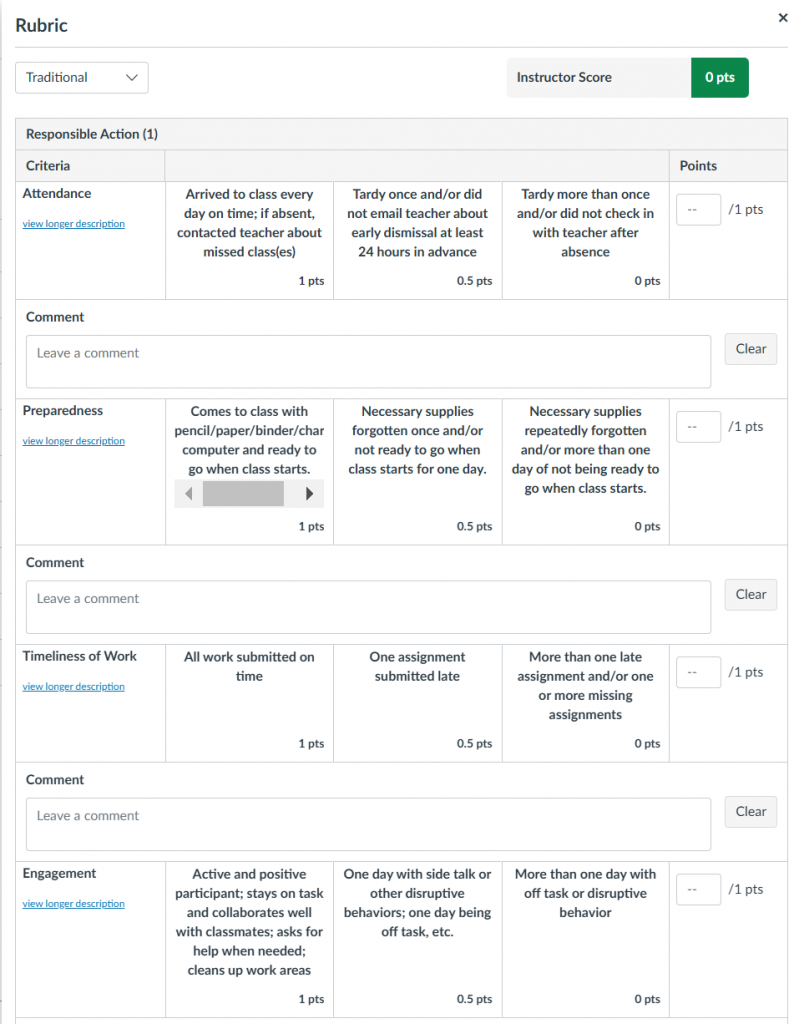
Since this rubric is one I use for all of my classes, it’s not specific to an activity or a tool we might be using for class. For each of my classes and the Makerspace, more targeted expectations are built through norm-setting and procedural instruction and practiced in each class every day, typically tied to specific activities. In my WEB class, for example, we do a mixture of demos and student projects. Some students come in to the class with prior experience, but most of them have none, so setting up expectations that allow everyone to learn at the level they need is crucial. At the start of the term, I ask students to complete an assignment that allows them to share their prior experience with me, and I will meet individually with those students who state they know content already to assess this statement and make a plan for how they should engage with the content. When I am doing a demo, I arrange my seating chart so these students are in one area of the room and given the option of working quietly on their own, with the expectation that all of the required code is present in the work they submit. This leaves a quieter, more focused space for those for whom the content is new. I also use a colored clothespin system (which I discuss in further detail in indicator (4) below) for students to be able to show me how they are doing without shouting in front of the class or monopolizing my time with individual help at the expense of the rest of the class’s forward progress. During group work, I point back to the RA rubric often, particularly the portion about seeking the answers to their own questions without coming to me first (ask a classmate or two, use ChatGPT or another AI tool for debugging, look it up).
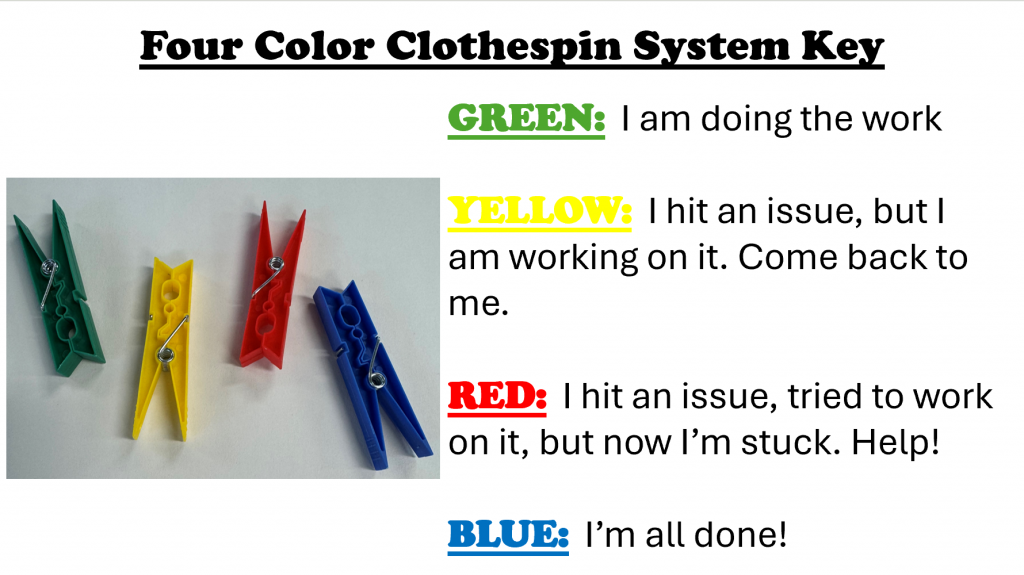

MAKE and BOTZ are two classes that I spend a great deal of time on behavioral expectations, as we are using tools and equipment that can either be dangerous or easily damaged and I want them to take care to keep themselves safe and keep the tools usable for others in the future. For example, in MAKE, we do a low-fidelity hand tools unit at the start of the trimester. As part of this unit, I walk students through how to use the different tools, what behaviors that could be dangerous look like, and they have a quiz on using the tools in both makerspaces appropriately before I let them build their siege engine projects.
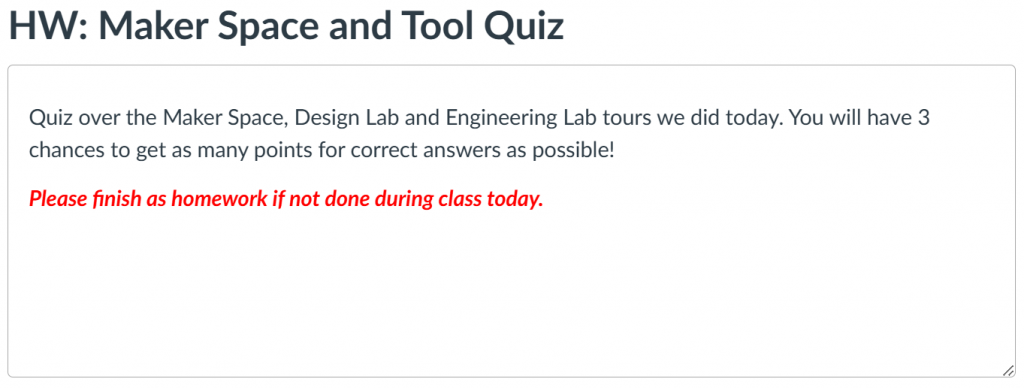
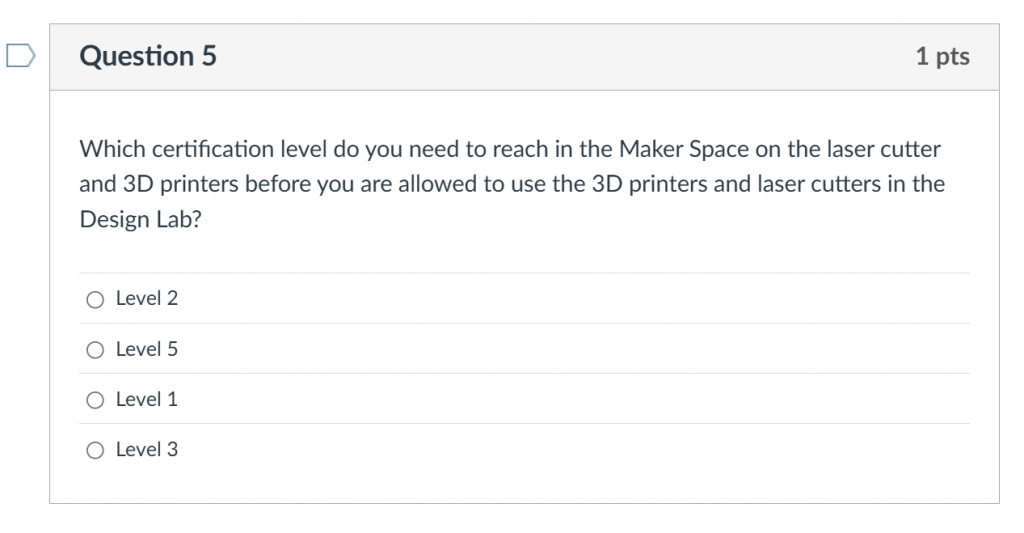
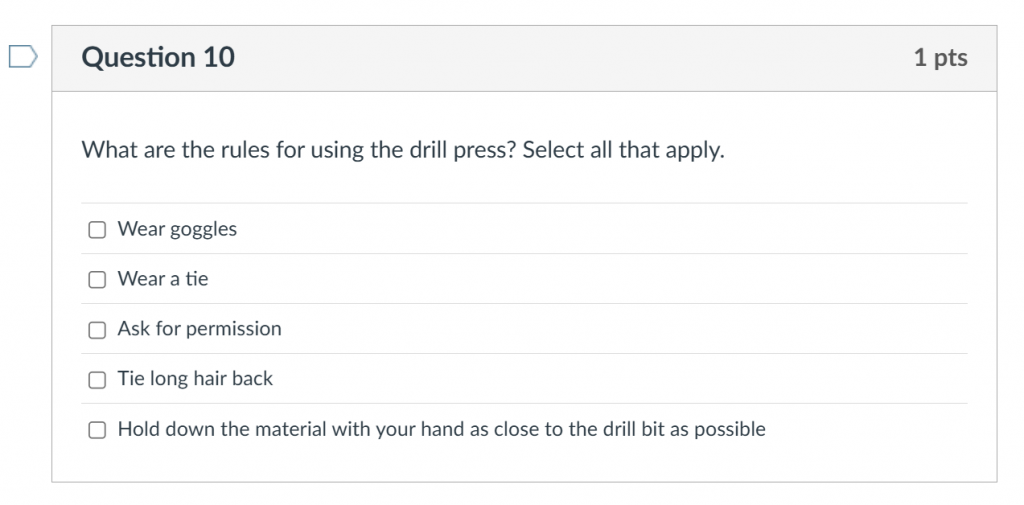
For BOTZ, we use a lot of the same tools, such as the drill press to make holes in DIY pieces to attach to the robots, so I spend time showing them how to use those tools as well. Additionally, I ask students to close their computers before I give this instruction to eliminate at least one distraction. This helps me to know they’re paying closer attention.

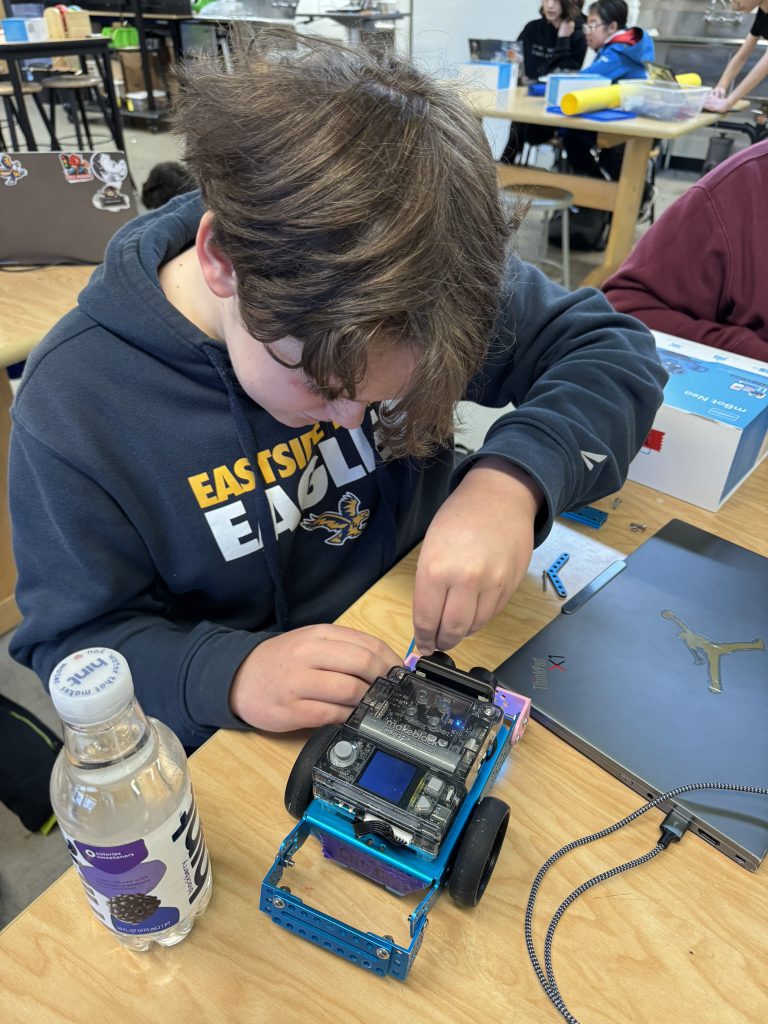
Sam U (Dad): “Maybe he will finally help me fix things around the house, too!” Sorry, Sam, he laughed when I told him you said this.
We also play games with push pins attached to their robots so we spend time discussing the fact the robots cannot differentiate between a balloon, another robot, or a person’s leg, and as such, we make sure our robots are facing away from others before we start our game.

Related to this, I also build in time during the last 5 minutes of class for students to clean up and put away their tools and equipment. For MAKE and BOTZ, I have several rolling metal shelves in the classroom which store these materials: a powered cart for students to plug in their robots to charge before next class, a shelf for their personal bins with tools and attachments, and a third shelf with blue totes on it for each of my MAKE students to store their projects and equipment. One of our first projects is to design a logo to make a sticker with the vinyl cutter for their boxes, which I’ve found increases buy-in for participation in this procedure. We practice using these shelves and bins from the first day of class, so by the time we’re a couple of weeks into the trimester, this procedure is a well-established habit.


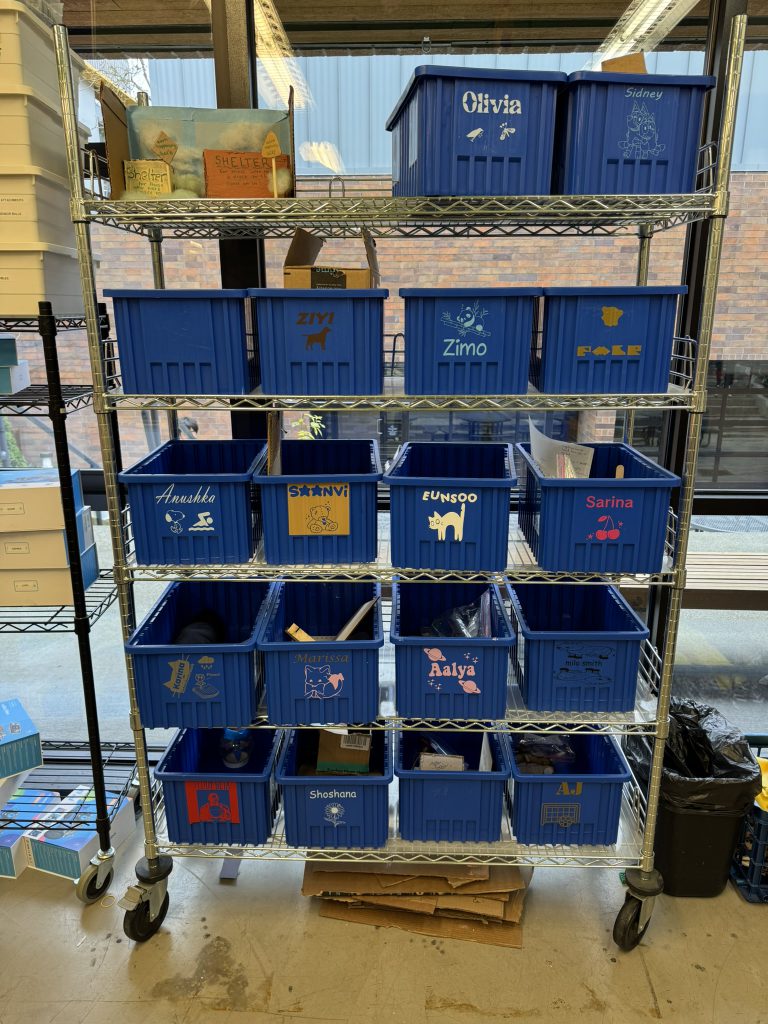
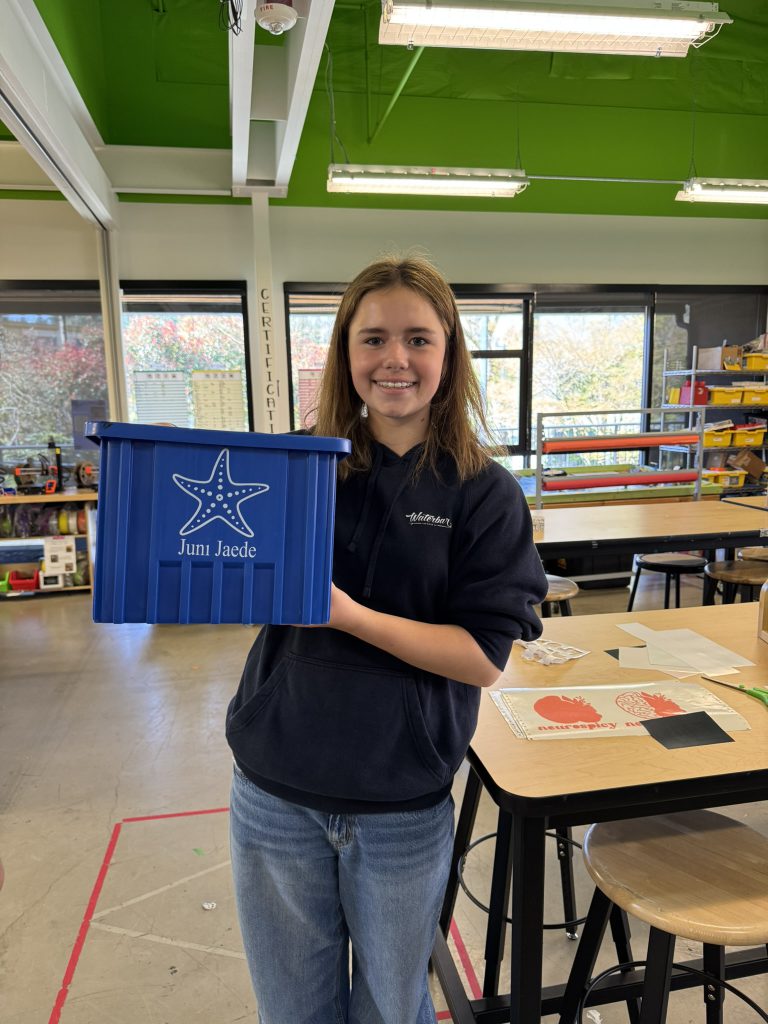
Teaching these expectations and procedures has proven to be a greater challenge in the Makerspace outside of a formal class. I have students from both divisions who use the space during free periods and study halls, and there isn’t always the time or opportunity to explicitly teach my expectations to everyone who comes into the space. However, I also believe I can’t be upset with students for not following the rules if I haven’t explicitly taught or shown what those rules and expectations are. My solution for this roadblock has been hanging signage around the classroom. There are signs on the doors of the room that ask students to wait to enter until an adult is in the room and shows a time that the Makerspace will be back open if it’s closed, rules for using each machine as well as instructions for use hanging next to each, photos of what it looks like to be cleaned up at each station, etc. This not only provides instruction on what my expectations are if I am not there or unable to teach them individually at that time, but also gives me something to point to when students are not meeting the expectations I have set.

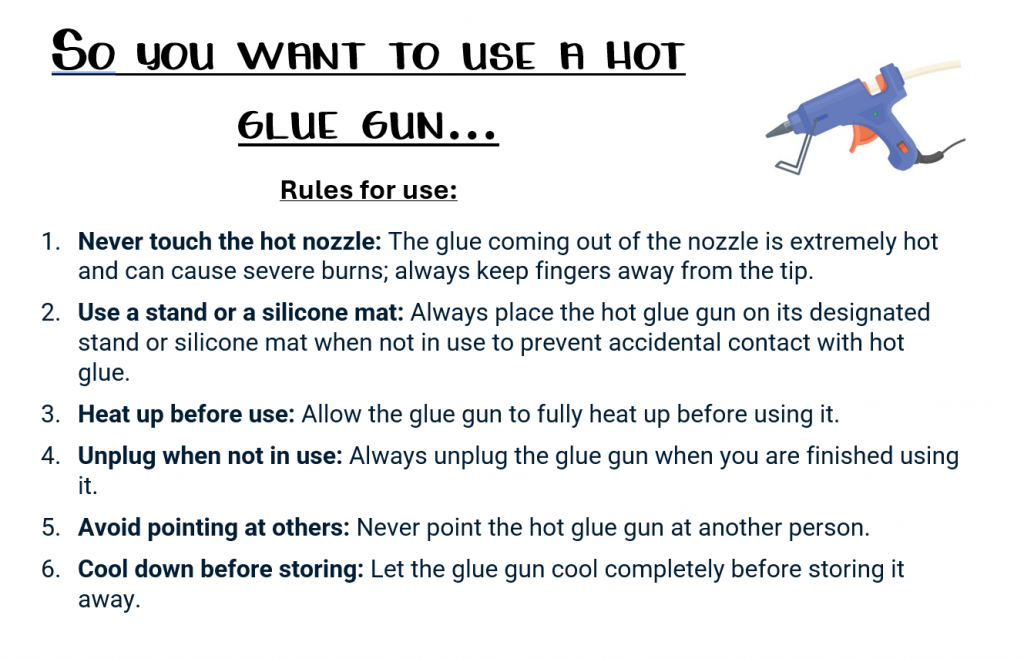
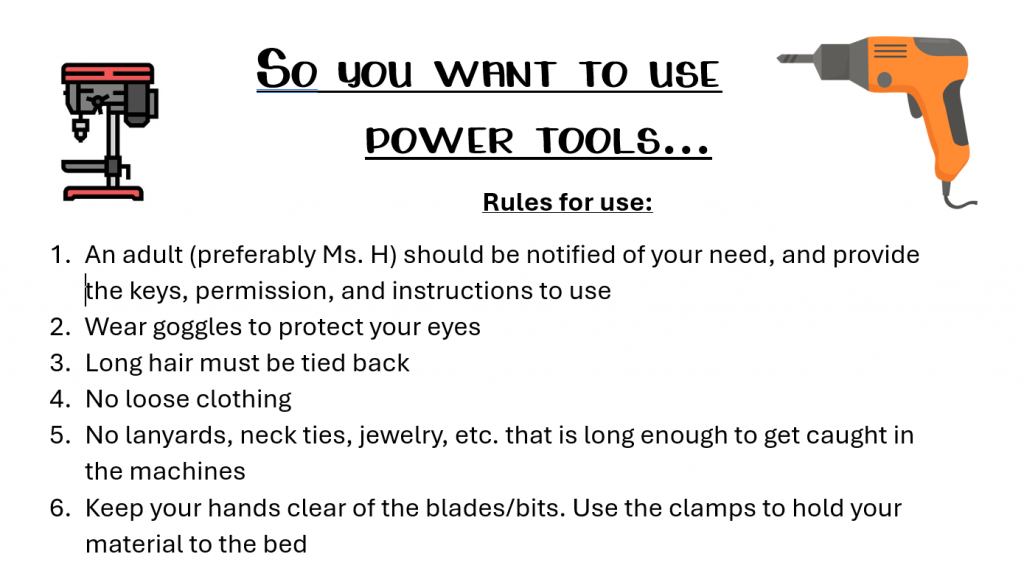
For the Makerspace, I take the approach, “a place for everything and everything in its place” and have meticulously labeled most things so there should be no question about where tools and materials go when students are done working. All of these strategies have made for easy and effective classroom management and a happy teacher.
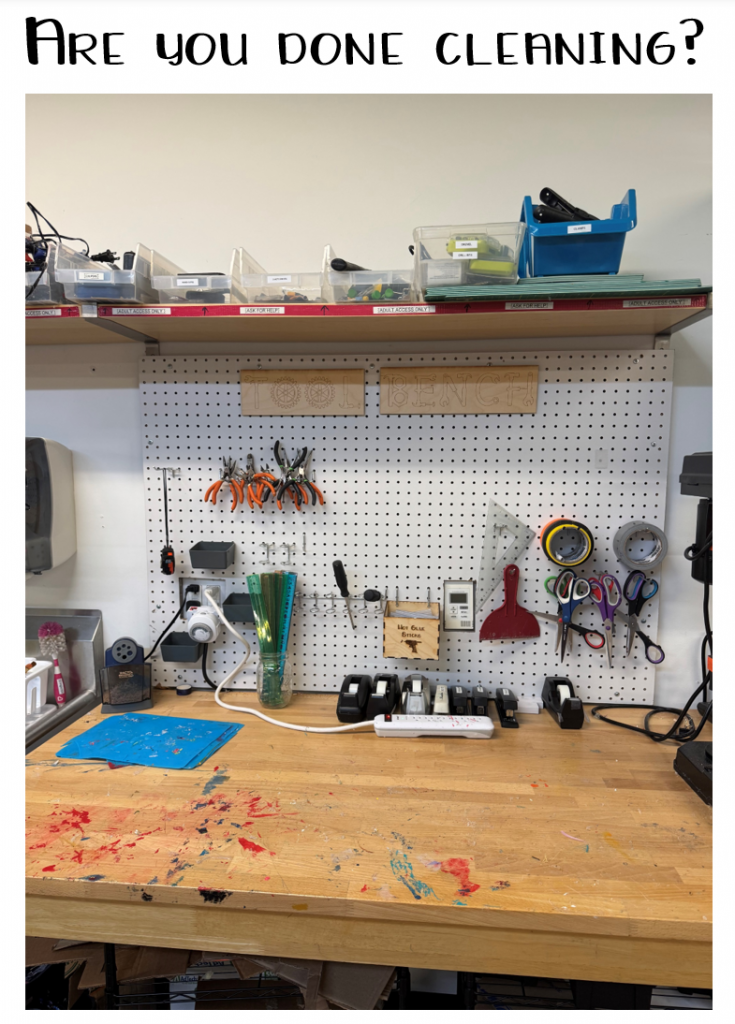

Throughout my teaching practice, I’ve prioritized clear, consistent communication of behavioral expectations tailored to each learning environment. By combining proactive instruction, thoughtful classroom structures, and embedded procedures, I’ve created spaces where students feel safe, responsible, and empowered to engage meaningfully with their work. These strategies ensure smooth classroom management and support student success across all of my classes and the Makerspace.
(2) Coaches and reinforces peer-to-peer dynamics that are appropriate and constructive
As someone who did not like group work when I was a student (and who still struggles with it today), this type of collaboration wasn’t a priority for me in my classes when I first started teaching. However, my comfort with and belief in the importance of learning to work with a diverse group of people, and teaching how to do this effectively in my classes, has evolved and I aim to offer a balance of individual assignments and group assignments both in my classes and in the Makerspace.
In WEB, the balance is definitely more heavily weighted in the individual work category, so I have been working with my discipline team and with other teachers to come up with better ways to do group work. When I took the course over from Derek, he had a group research project built into the start of the class that gave students crucial background knowledge about different parts of the Internet and how Networks are built and function. They would build a PowerPoint slide deck with the information from their research, but we never shared these with the class because every group’s content was similar, and the students (and myself) had found this project to be boring. The content was important, however, so I have iterated on it multiple times over the last 5 years. My current iteration has been the best so far. I taught classes HTML coding before the research project, so the work they produced could be an extension of this content. In their groups, students divvied up the topics so each person was responsible for one, then they built a web page for their individual topic to teach their team the content, and finally teams built a group website with everyone’s individual work so all the research topics are represented. The collaboration on the group website was a lot of work, however, because there isn’t an easy way to collaborate on a shared HTML file like they can with the Office programs, but the feedback from my class this trimester has been positive. They enjoyed sharing the work load, teaching each other about their topic, and applying the HTML coding we had learned to make another webpage.
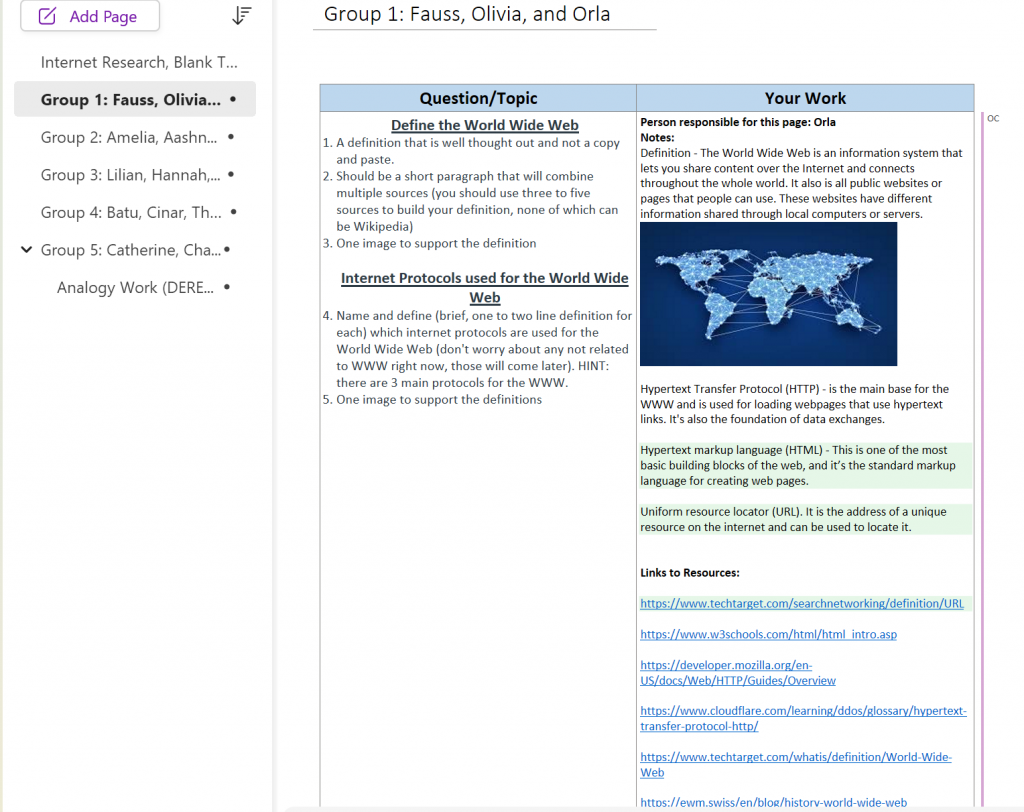

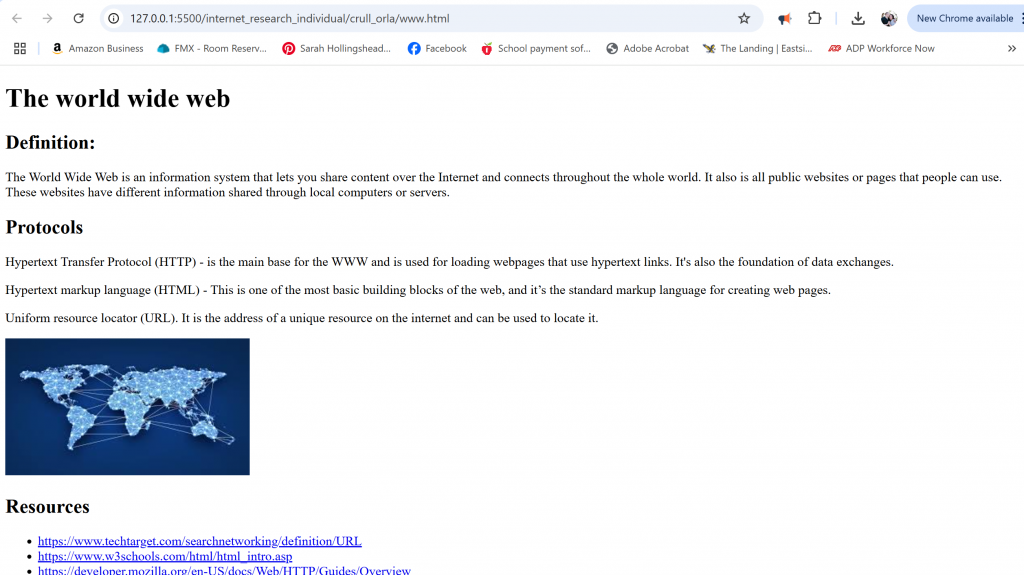
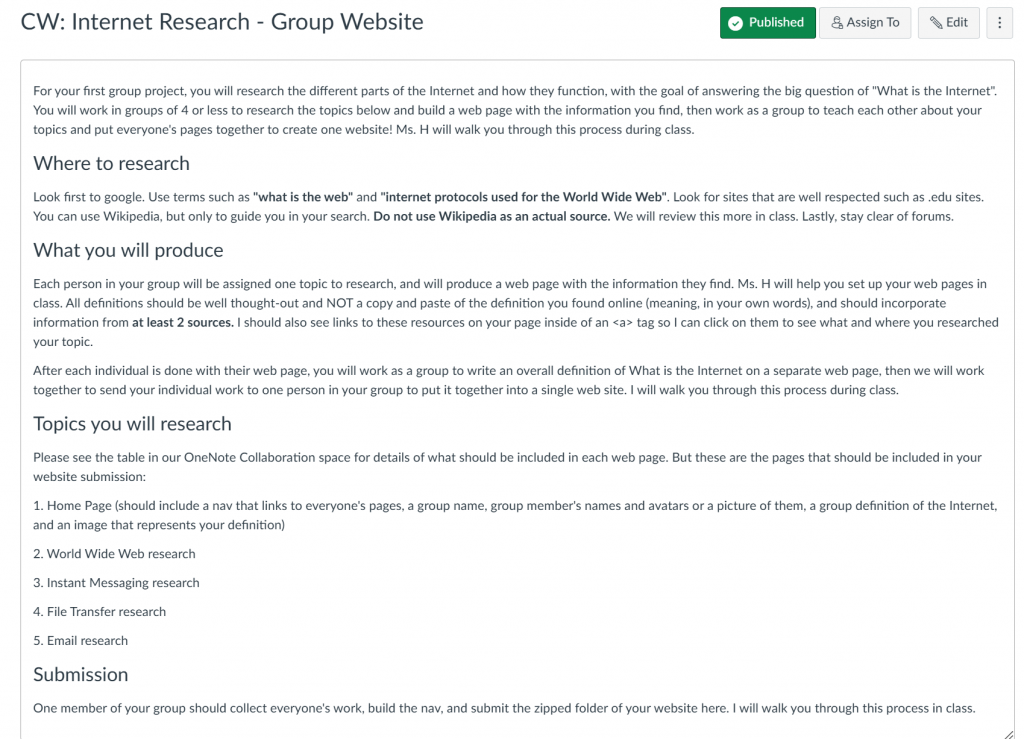
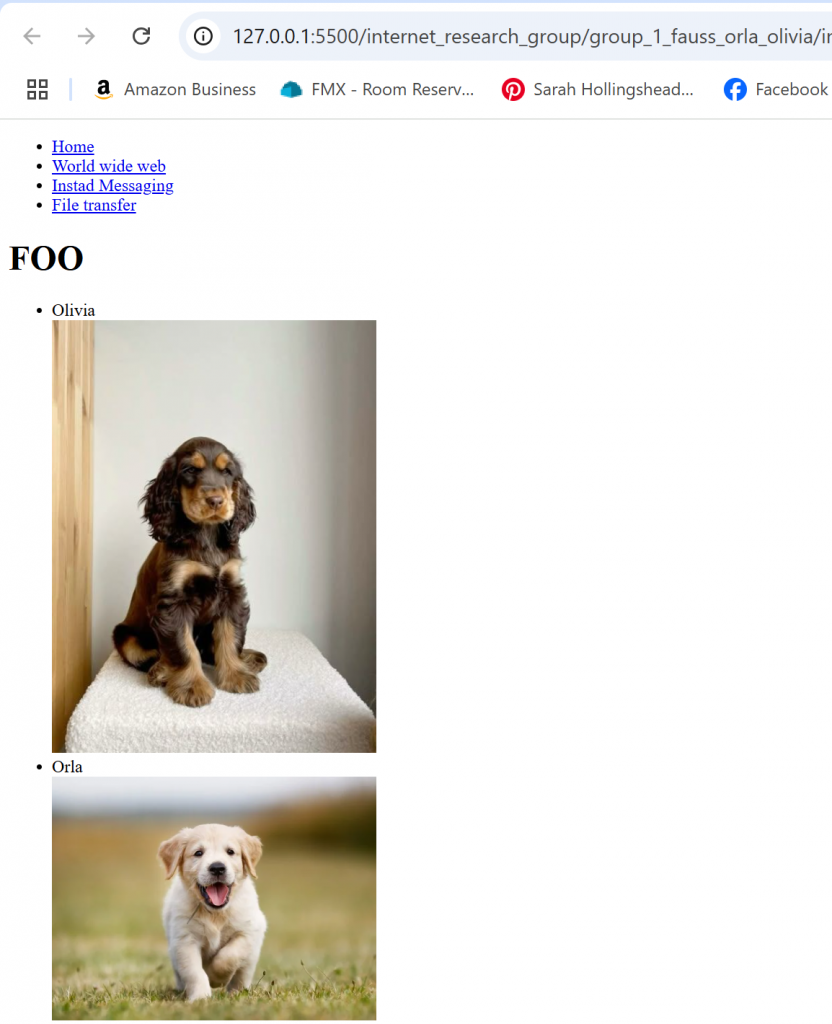
In BOTZ and MAKE, the group work is literally constructive, as they are building a variety of different things in small groups almost every day.
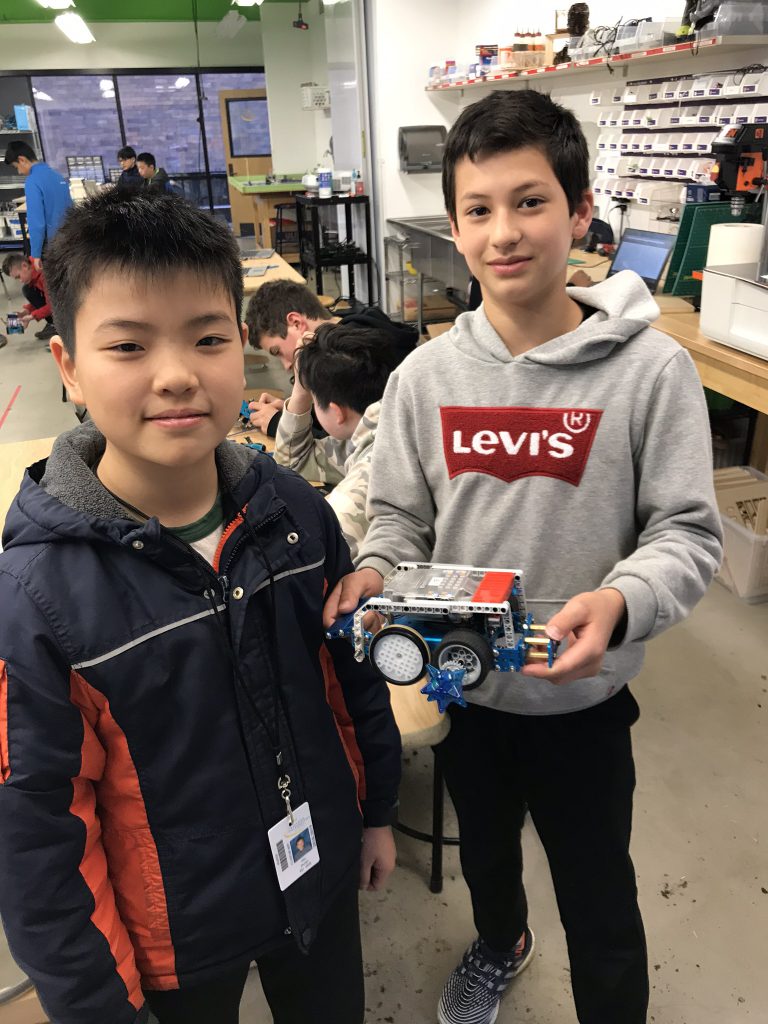

In BOTZ, we have a lot of what I call “Choose Your Own Adventure” time when they have completed the required task for the day. One of our first assignments with the robots covers moving with precision, where they have to have their robot drive forward exactly one meter, then make a 90 degree turn, then drive forward another meter to make a 90 degree angle, before using a loop to have their robot drive in a square. These assignments typically don’t take a very long time, so I provide multiple related challenge options to work on in small groups after they’re finished. One of the options is to construct a maze or obstacle course using blocks and other materials in the classroom, then work together to program their robots to navigate the maze. This takes instruction on how to share ideas before choosing one, sometimes with a lot of compromise. But the end result is always a lot of excitement over their robots making it through the maze they worked together to create.
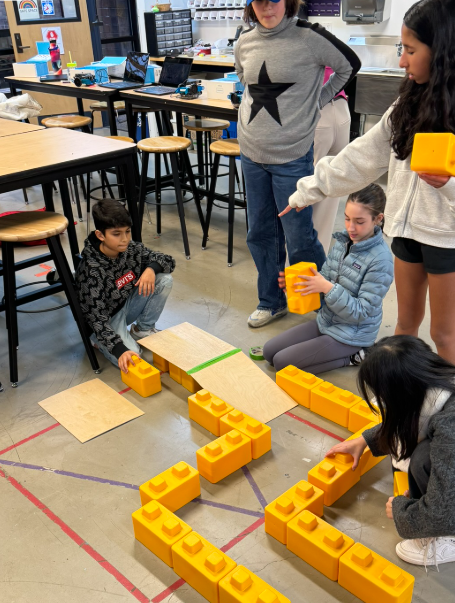
In MAKE, we do a collaborative building project at the start of the trimester where they construct and test siege engines and compete in a game that differs based on a specific theme I have chosen for each trimester: fall is a creative candy delivery system, winter is a snowball fight against LEGO minifigures, and spring is basketball-themed and called Make Madness (based on March Madness). I allow students to self-select into teams of 2 or 3 and they work through several steps from planning, testing, and iterating before we play the game. In the planning stages, I ask students to define key terms related to siege engines and come up with at least 3 possible designs before they decide on one to build together. This also requires a lot of compromise on the parts of the group members to decide which features to include in their prototypes, who builds which part, and sometimes even the aesthetics of the device if they want to add style to it.
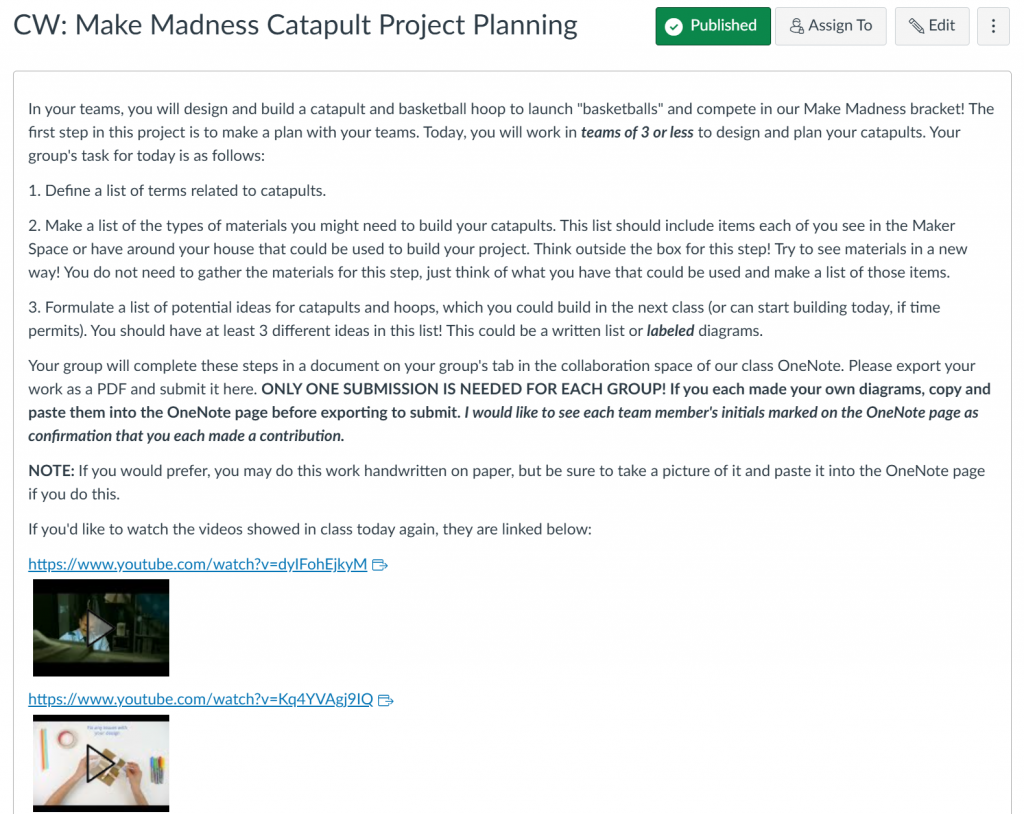
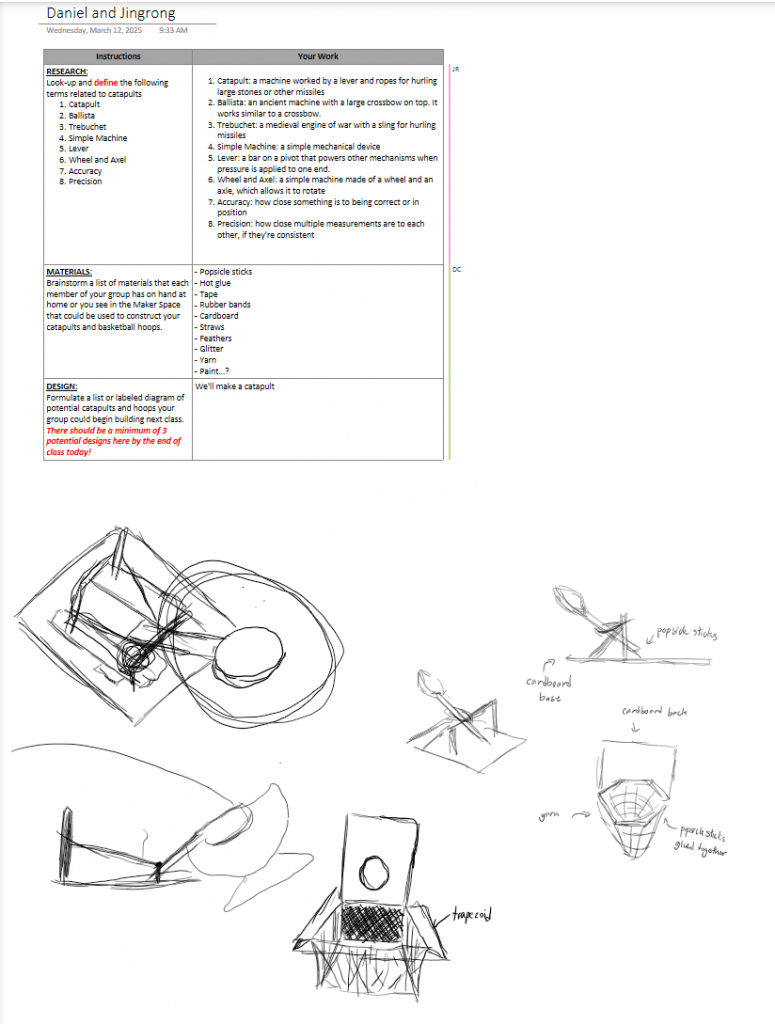
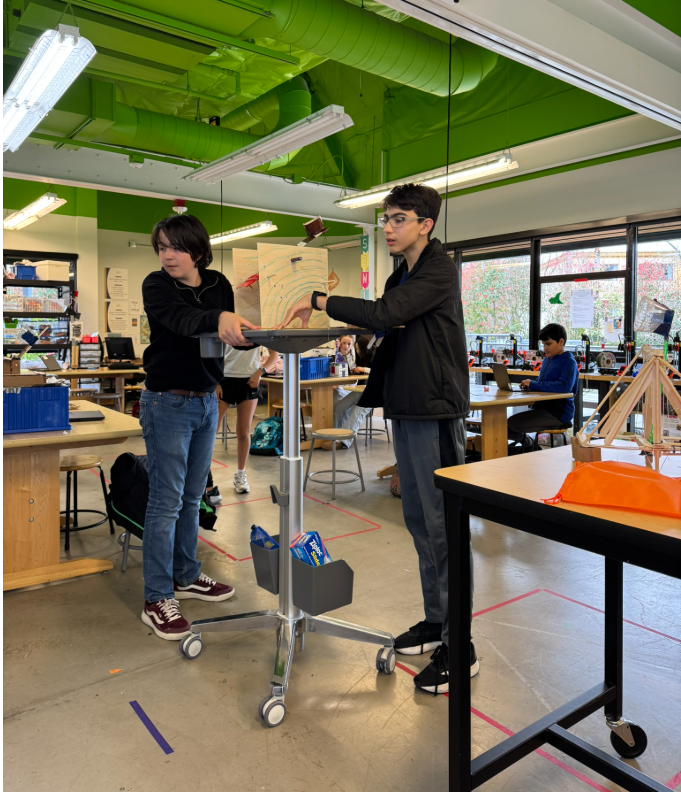
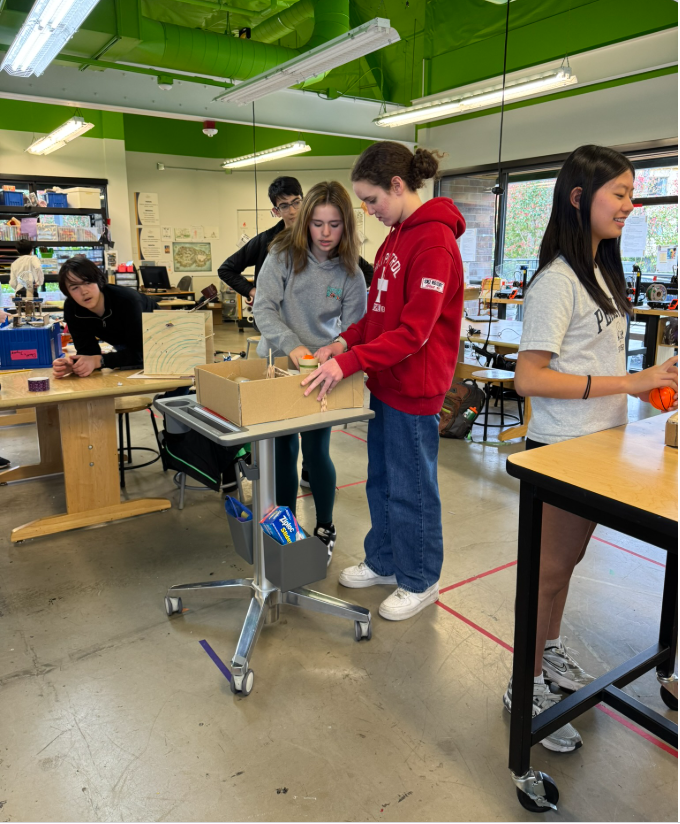

My work with students in the Makerspace during clubs and open time probably provides the greatest opportunity for me to reinforce and coach group dynamics among students. One of my goals with the procedures and culture I’ve built in the Makerspace has been to empower students to teach other students (and adults!), since I am only one person and cannot help everyone who has a question at once. Over the last couple of years I have built up a great cohort of students who have a vast knowledge and certification on the different machines in the makerspace, and I have provided training at times with how to help others in an effective way. This year a lot of the group work has happened without prompting from me, which is my dream come true for the space! I’ve had impromptu instruction sessions on using the laser cutter and CAD modeling for 3D printing purposes occur without requests or prompting from me, which has been so exciting to witness!

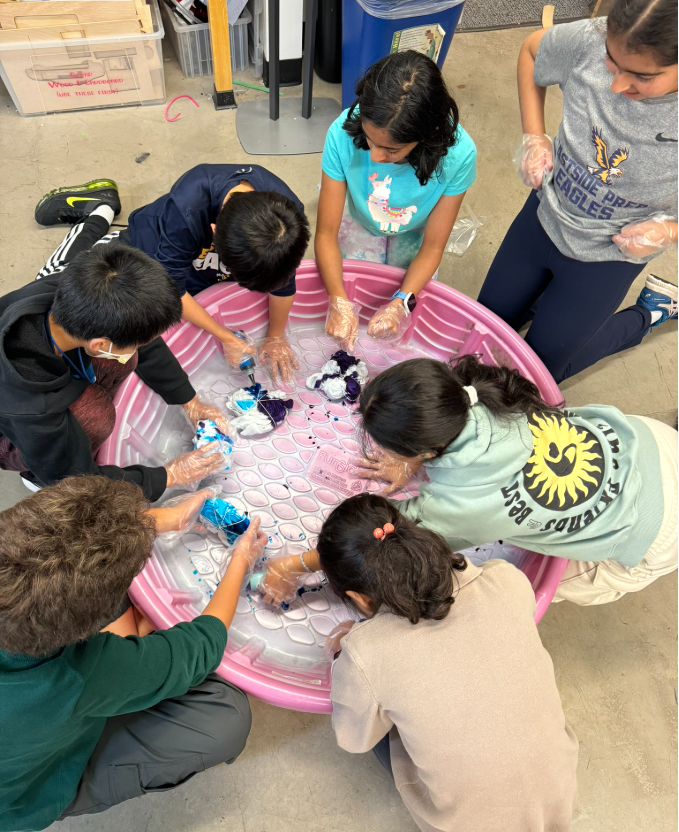
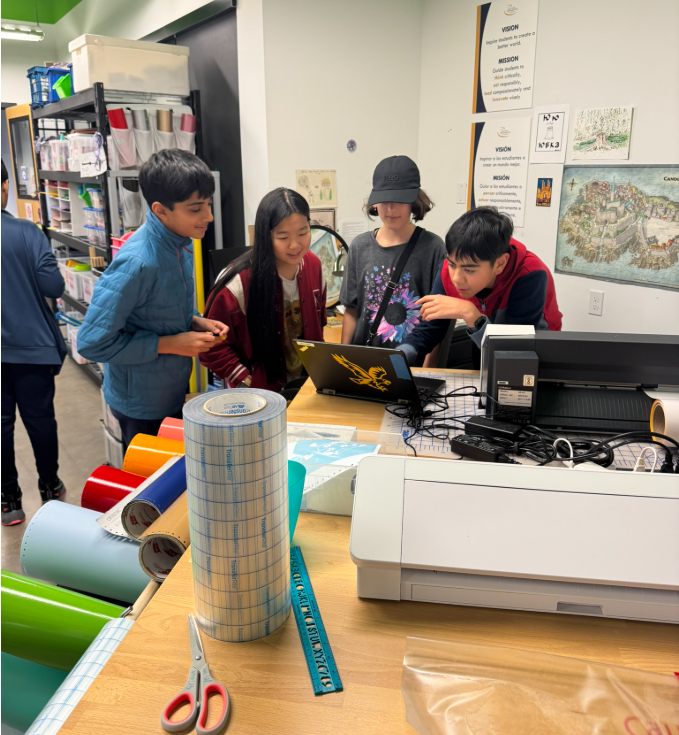
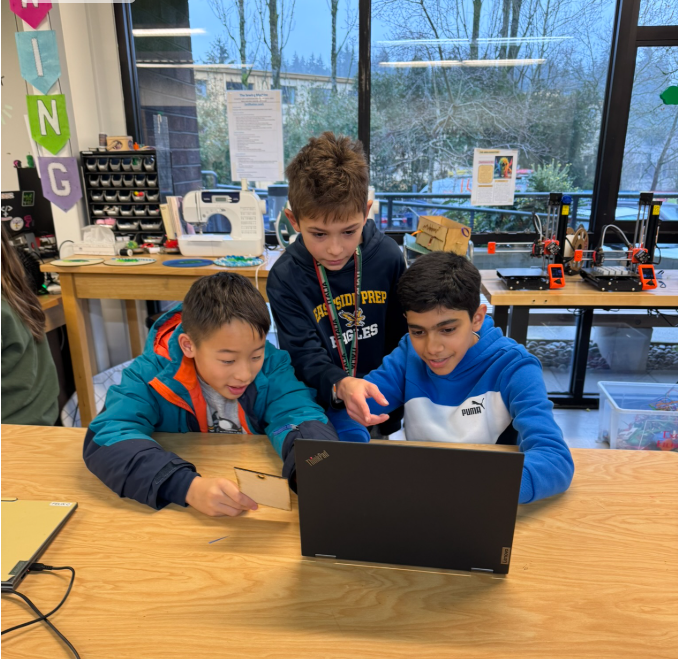
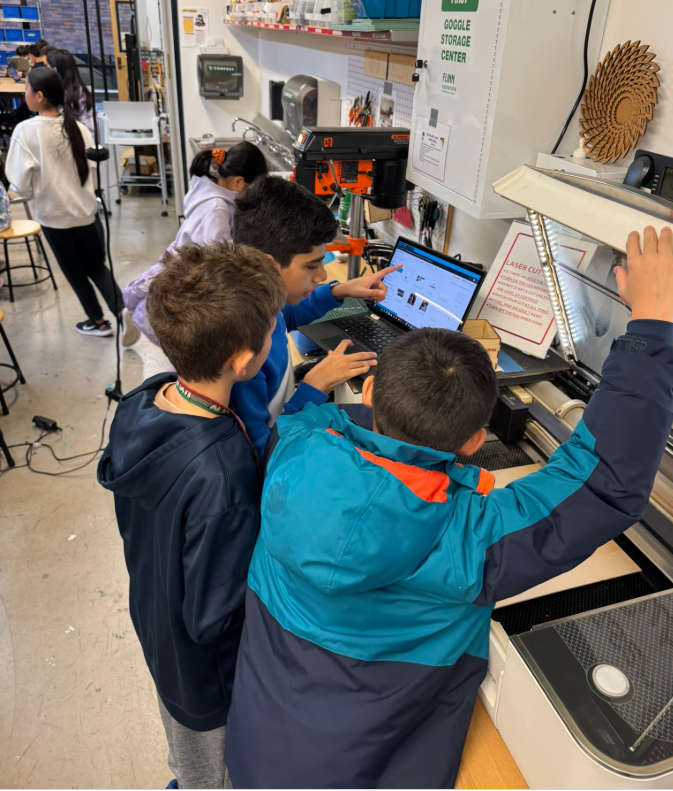

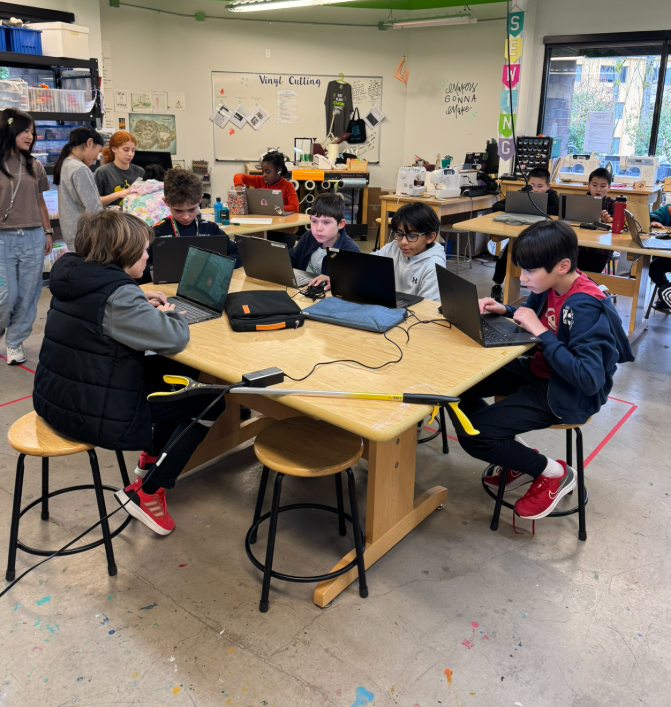
Over time, I have grown to value the role of constructive peer-to-peer collaboration and now prioritize building opportunities for students to learn from and support one another. Whether through structured group projects in WEB, hands-on teamwork in BOTZ and MAKE, or organic peer coaching in the Makerspace, I aim to foster a culture where students develop the skills to communicate, compromise, and collaborate effectively. My efforts are focused on not only designing group experiences but also coaching students in how to work together productively and respectfully, with the ultimate goal of nurturing independent problem-solvers and community-minded learners.
(3) Develops a respectful relationship with each student, instilling confidence that the teacher is invested in their success
As someone who has relator as one of my top strengths, this indicator is an area I put a lot of time and effort into.
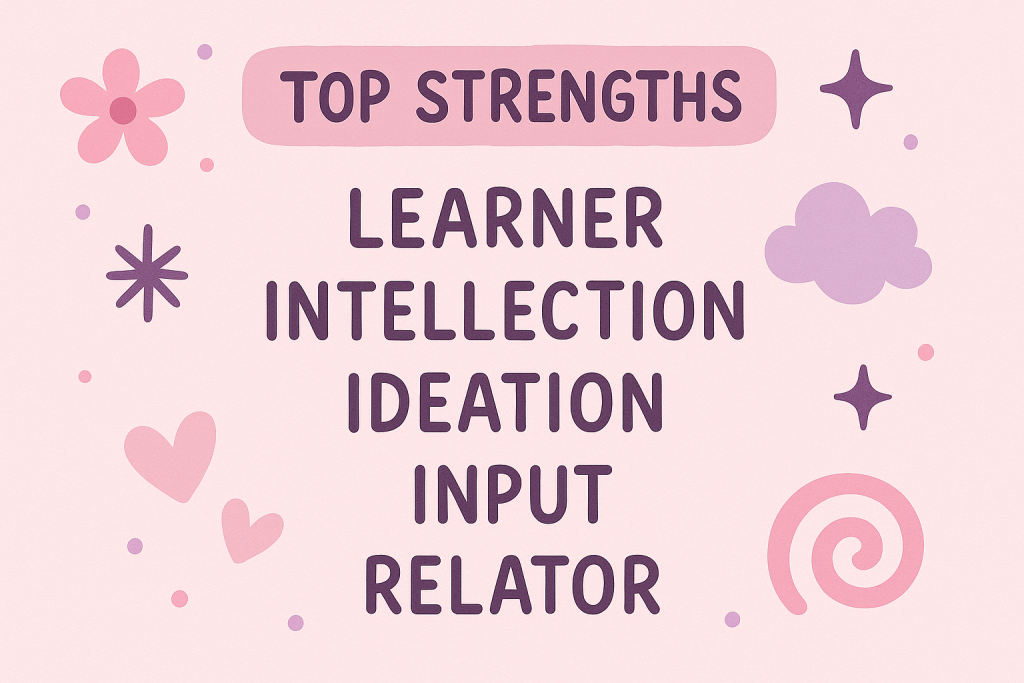
Building respectful relationships with students and ensuring they know I am invested in their success is truly the heart of my practice and the main reason why I became a teacher in the first place. I’ve had a number of teachers who built these types of relationships with me:
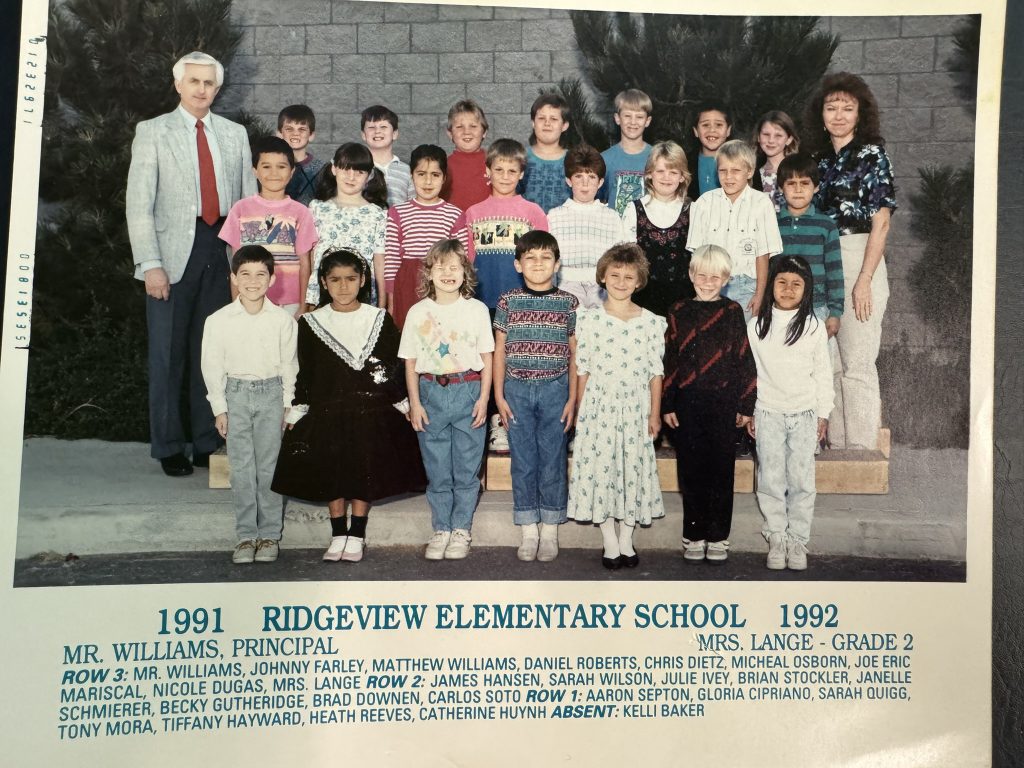

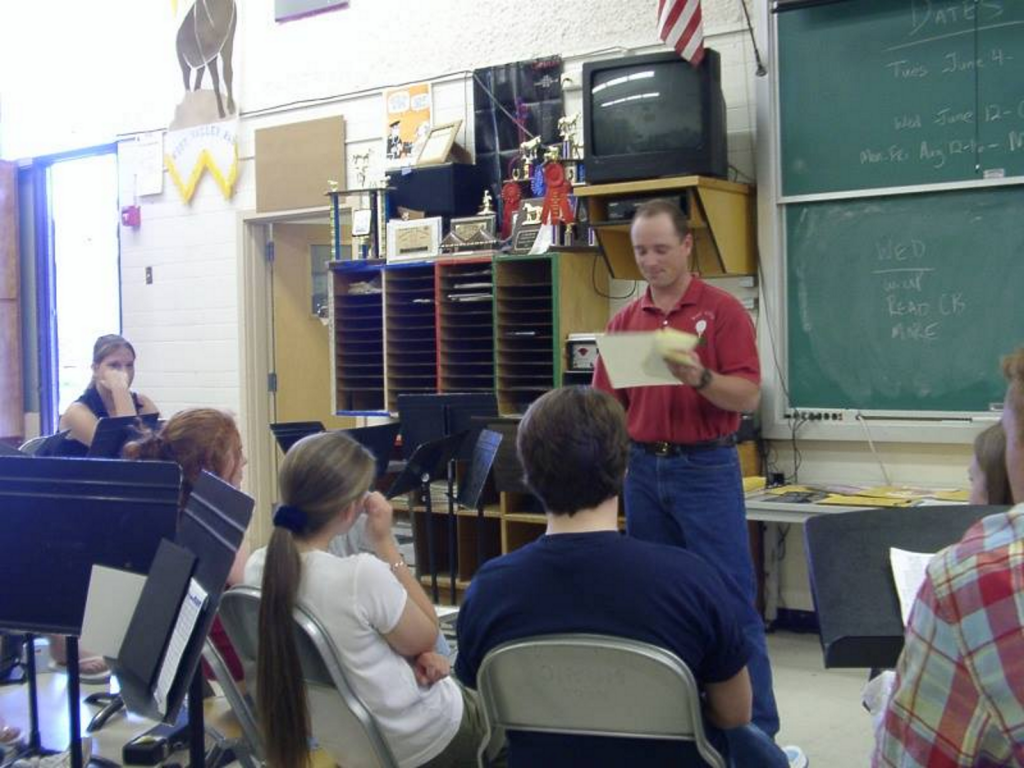
Once I decided to become a teacher, I knew that I wanted to impact the lives of students in just as meaningful of ways as my teachers did for me when I was a student. I have been lucky enough to build relationships with many students over the 17 years I’ve been teaching. This is especially true for my first year teaching solo in the 2008-2009 school year. I had a very small class of 5th grade students (there were only 5 of them) at Evergreen Academy. This year was so special to me, we built such a tight-knit little group, and I still speak to many of them today. I have been honored to see them graduate high school and move into their adult lives, and have been lucky enough to still be in contact with their families and watch the updates on their lives. I transitioned to teaching primarily 4th grade in the years after this at Evergreen, where I was able to teach younger siblings of this first class and other incredibly special individuals. When I was hired at EPS, it was nice that Evergreen was a feeder school to us, because I had second and third opportunities to teach my Evergreen students again!
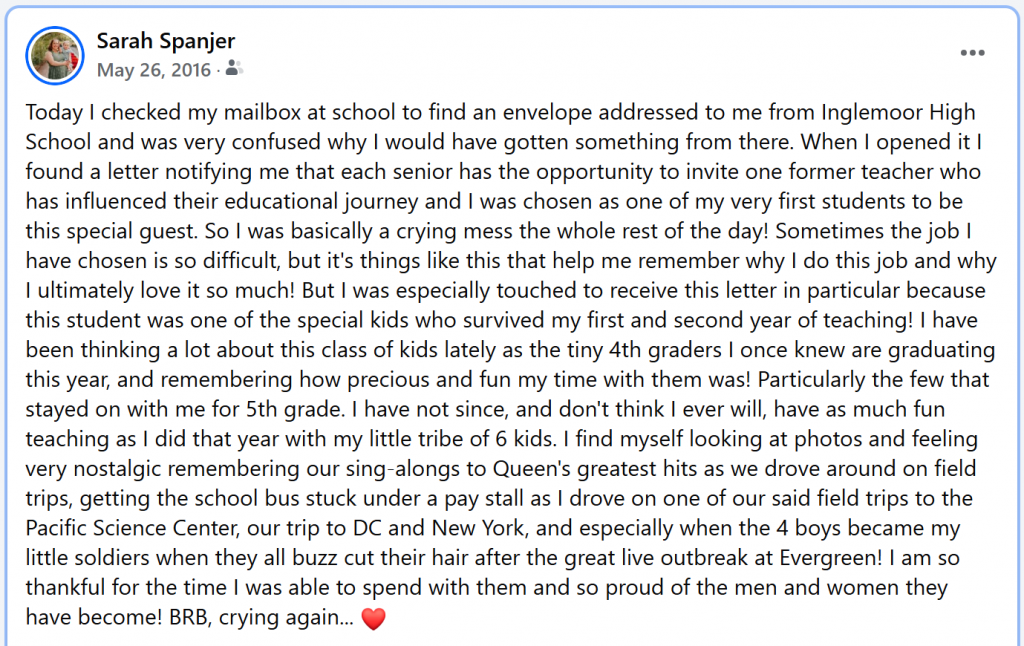
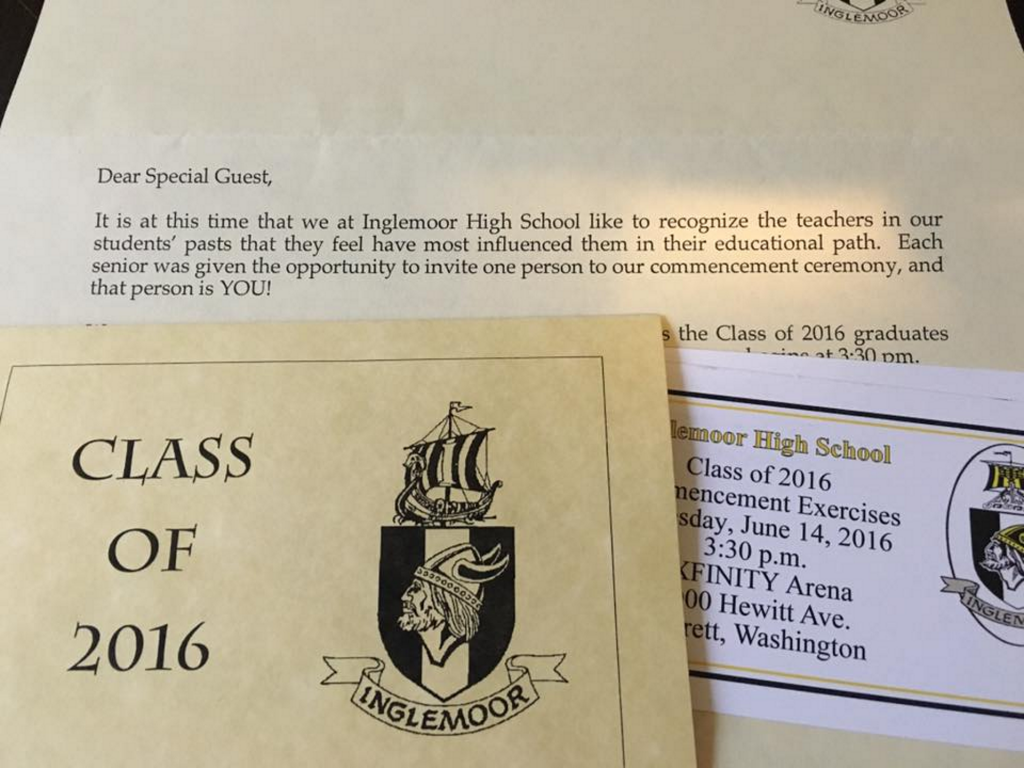
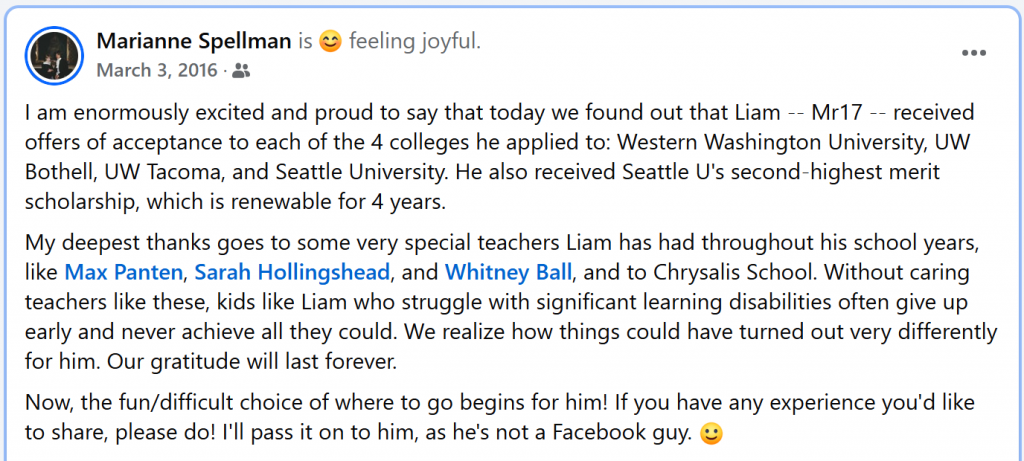
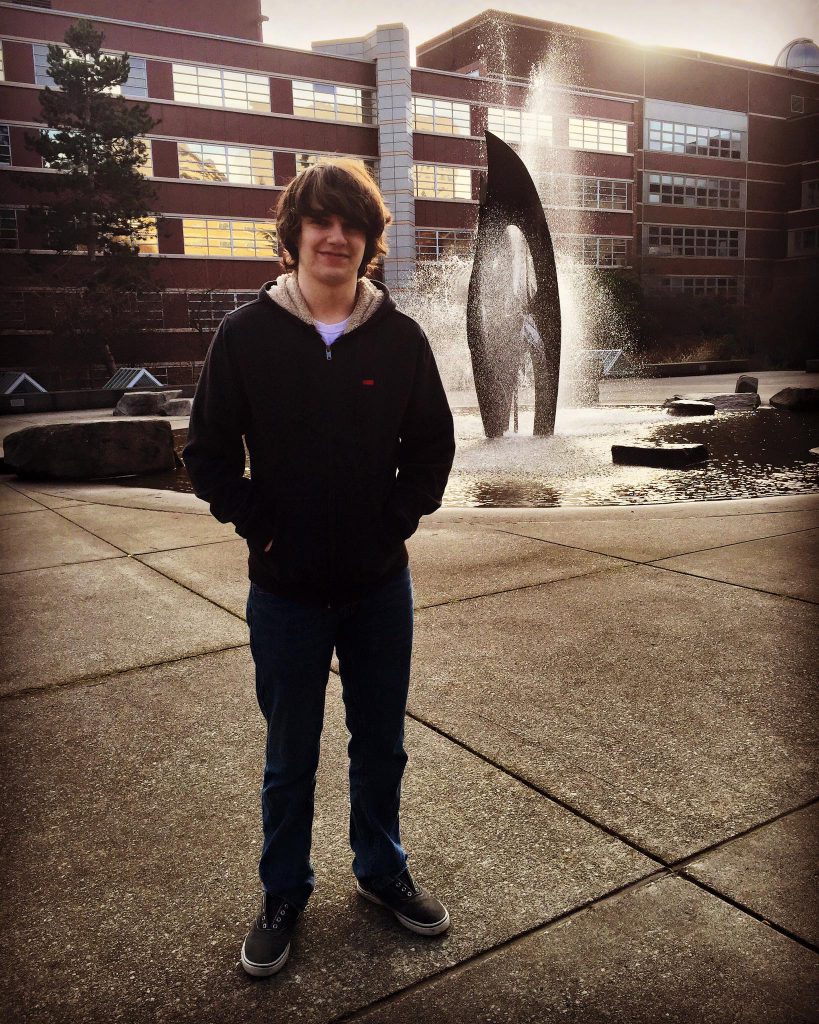
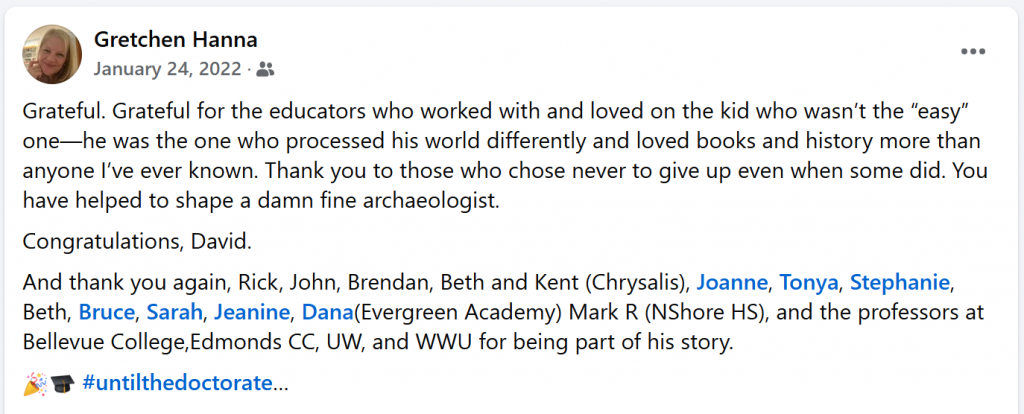
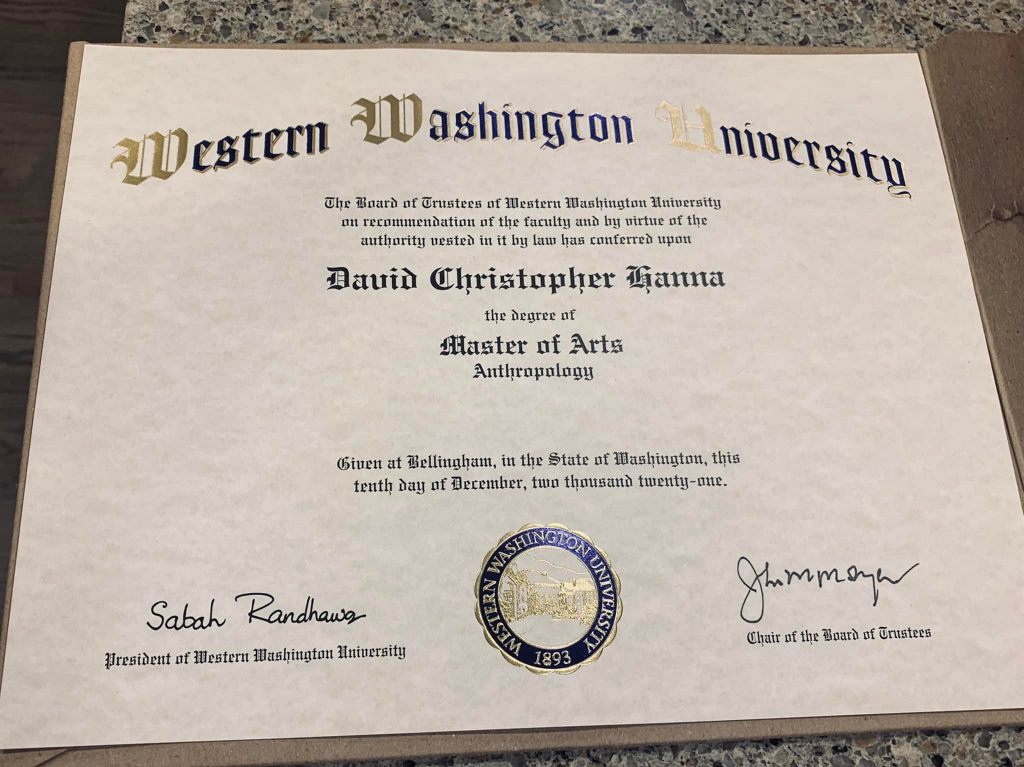
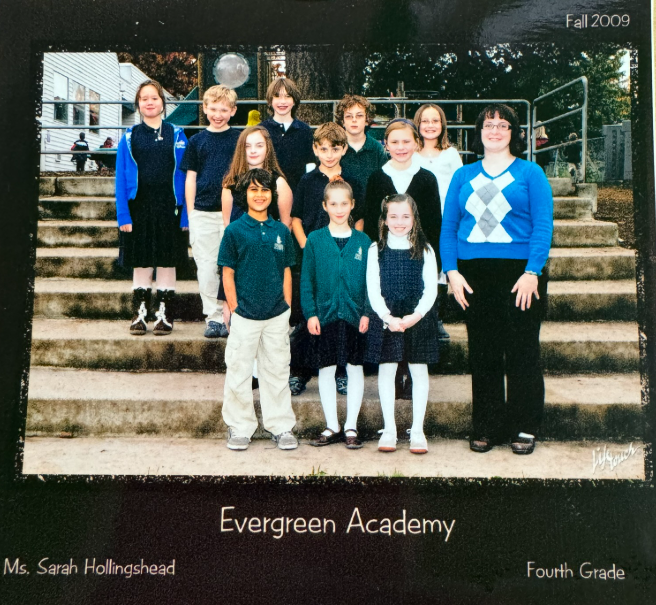
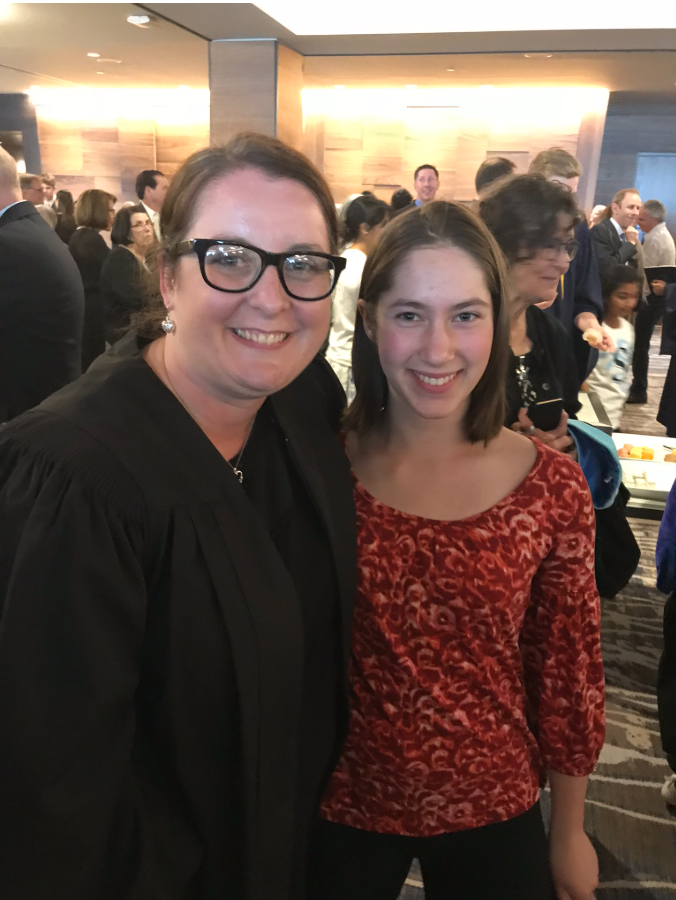
Some of them even end up coming to teach at the same school as I do!
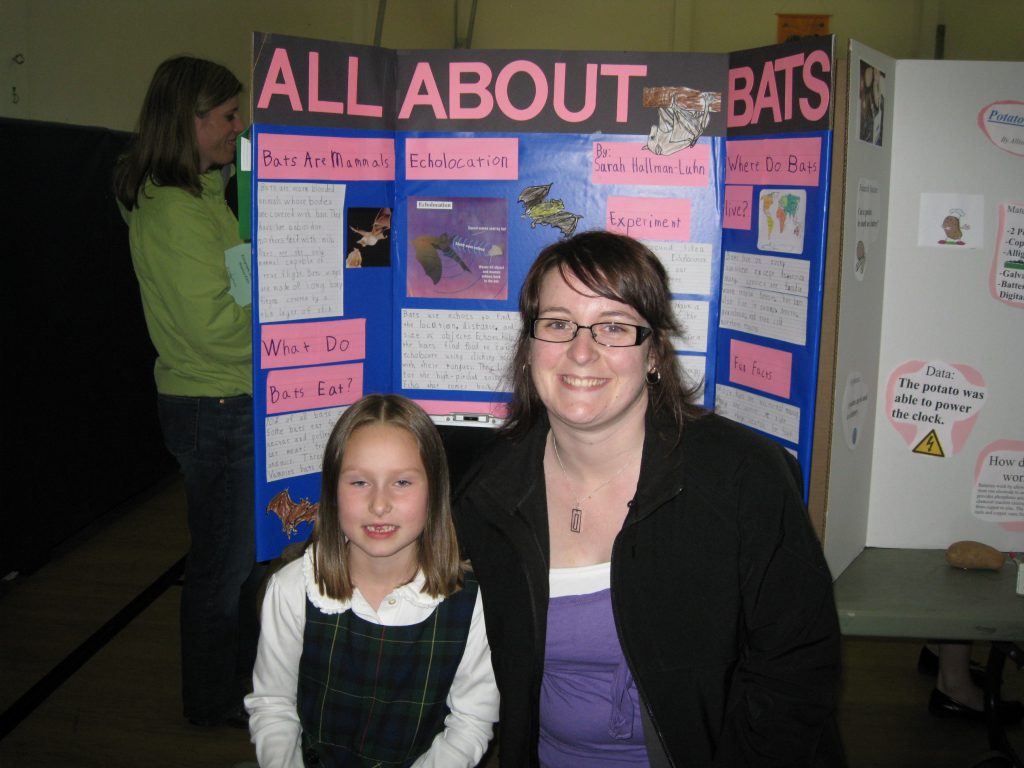
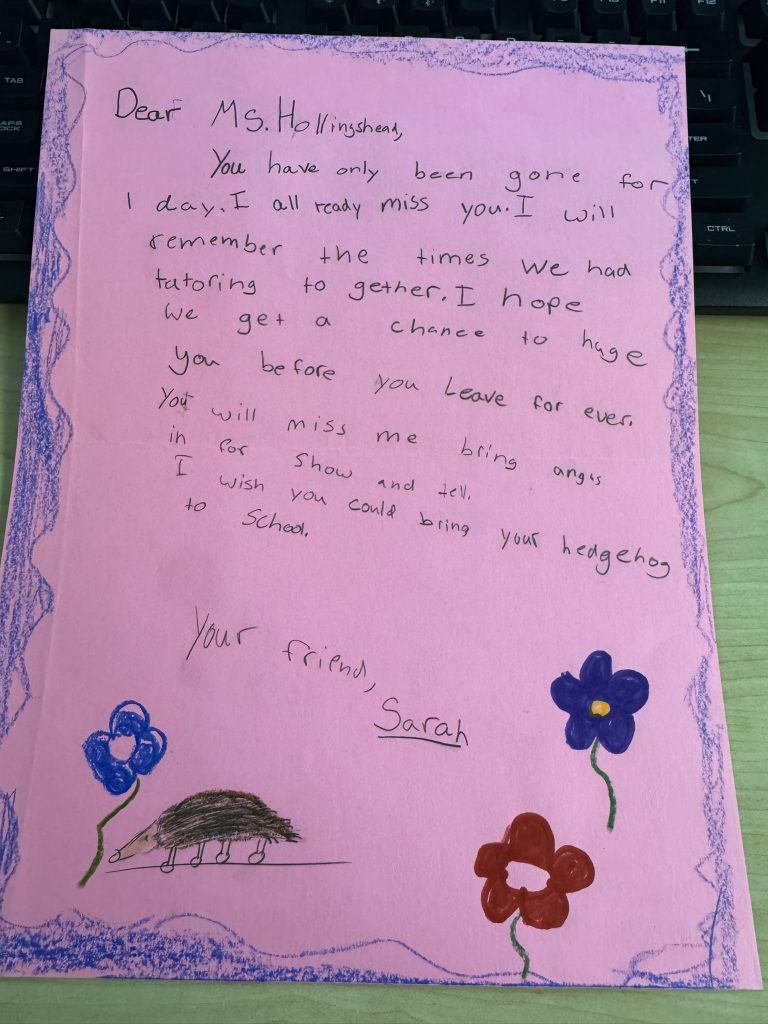
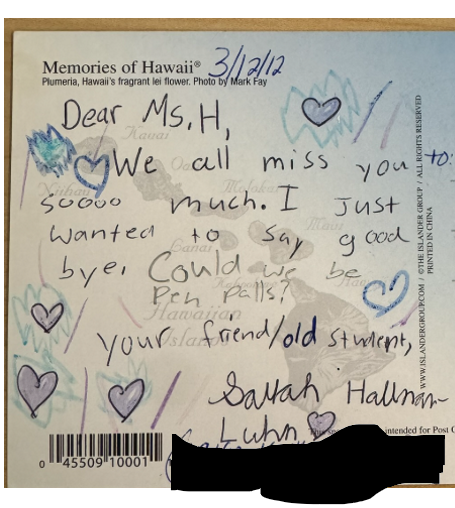
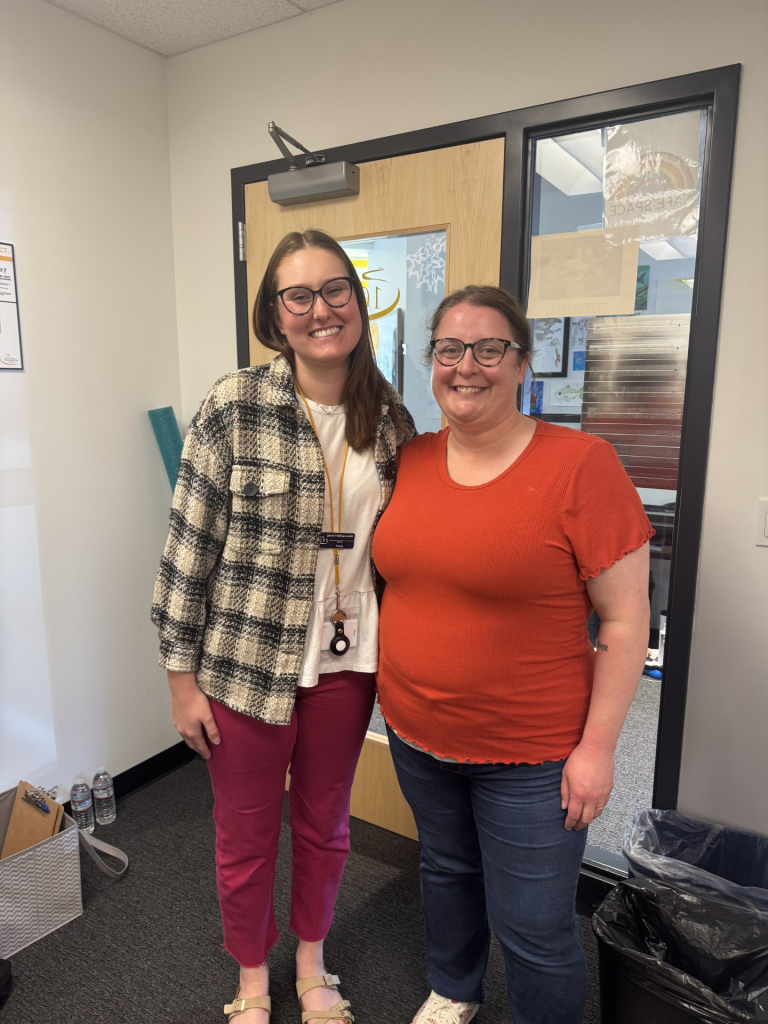
In my years at EPS, I have continued my quest to be a caring and supportive teacher to all students, and have built several relationships with students and their parents that are particularly meaningful. One area I like to show up most in is tech, as I believe representation matters and being a woman in a male-dominated field offers me the opportunity to connect with my female-identifying students who are interested in tech and help them on the road to success. This was the case with Addison Affleck and Sanjana Satagopan and my other robotics girls. Sanjana was a Lego-loving 5th grader who drug Addison along to FLL practice one day, and that blossomed into an amazing all-girl robotics team for the next several years. I spent a lot of time with them and their parents at practice and events. Even after they left the MS to move on to the Upper School and now college, we are still involved in each other’s lives and check in frequently. Sanjana even grew passionate about technology and is currently in the honors Computer Science program at UW, all stemming from her joining the FLL team in 5th grade. She and I are currently working on collaborating on some guest lessons or field trips with my current middle school classes.

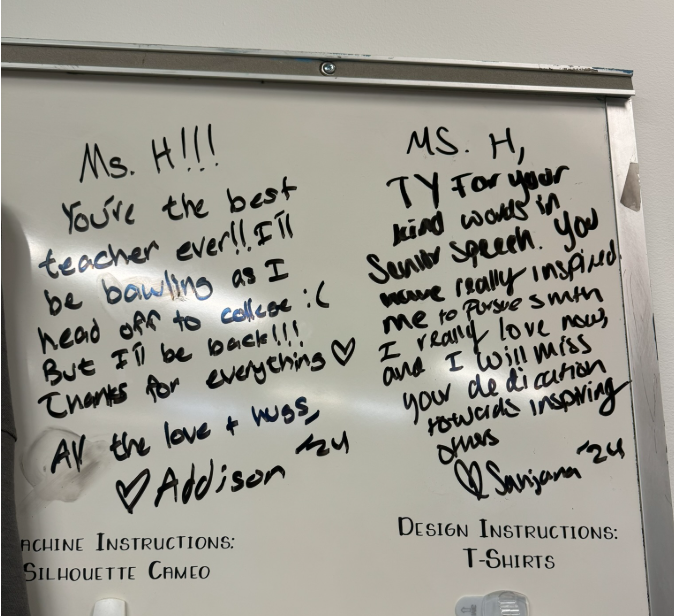

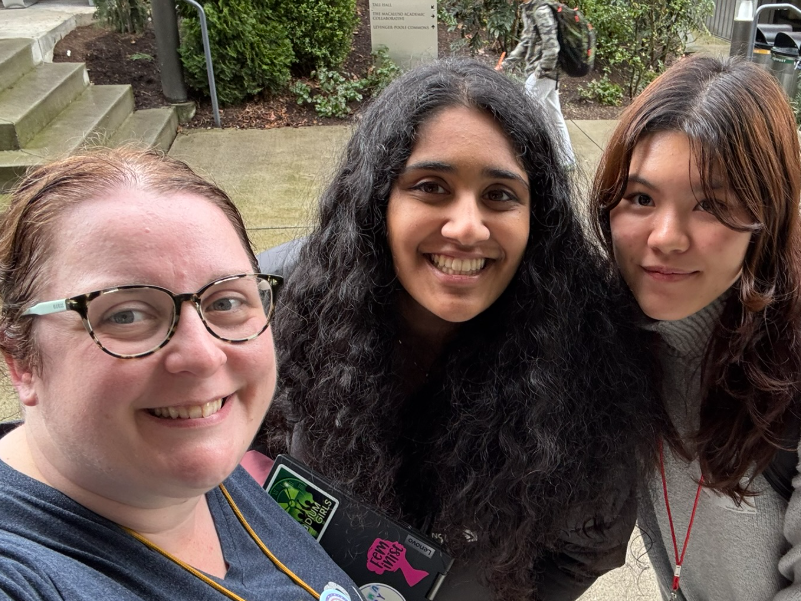
I also have a soft spot in my heart for students who are neurodiverse, and one student with whom I share a similar neurodiversity and have formed a bond is Riya Jackson. I first met her when I subbed for Wink after I returned from maternity leave with my daughter, and she didn’t have PowerPoint installed on her computer. Since then she’s come to me for tech help, social help, and just to talk about our shared interests. She writes me a lot of notes and even made this video for me this year…even though she made Lisa Frystak the same one, I still cherish it!
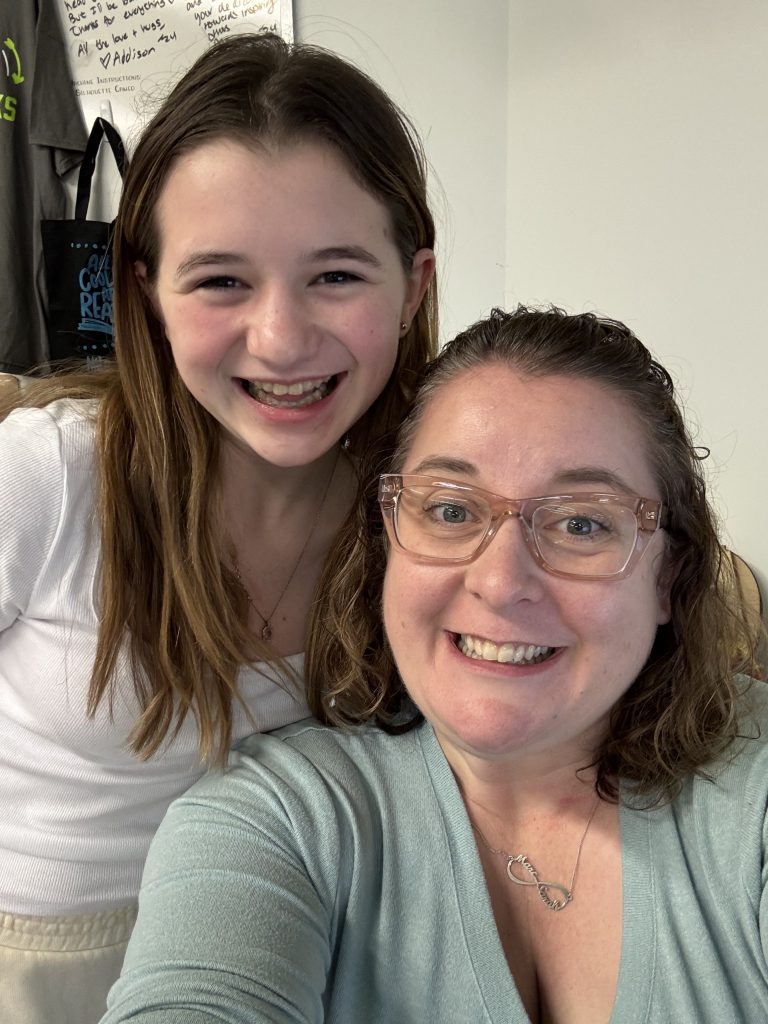
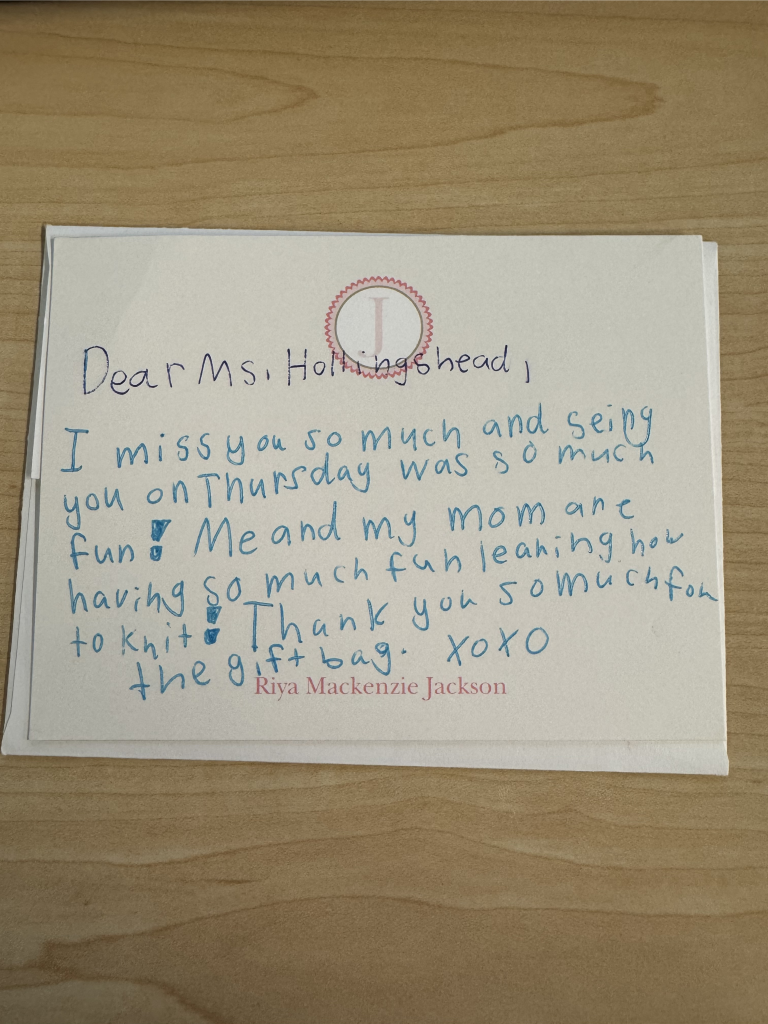
Building respectful, authentic relationships with students is central to my teaching philosophy. By taking time to know each student as an individual, I strive to foster trust and a sense of belonging that empowers them to thrive. Whether through ongoing mentorship, shared interests, or simply showing up when they need support, I aim to ensure that every student knows I care deeply about their growth and success—both in and out of the classroom.
As a tack-on, here are photos of other sweet letters and gifts I’ve received from students over the years!
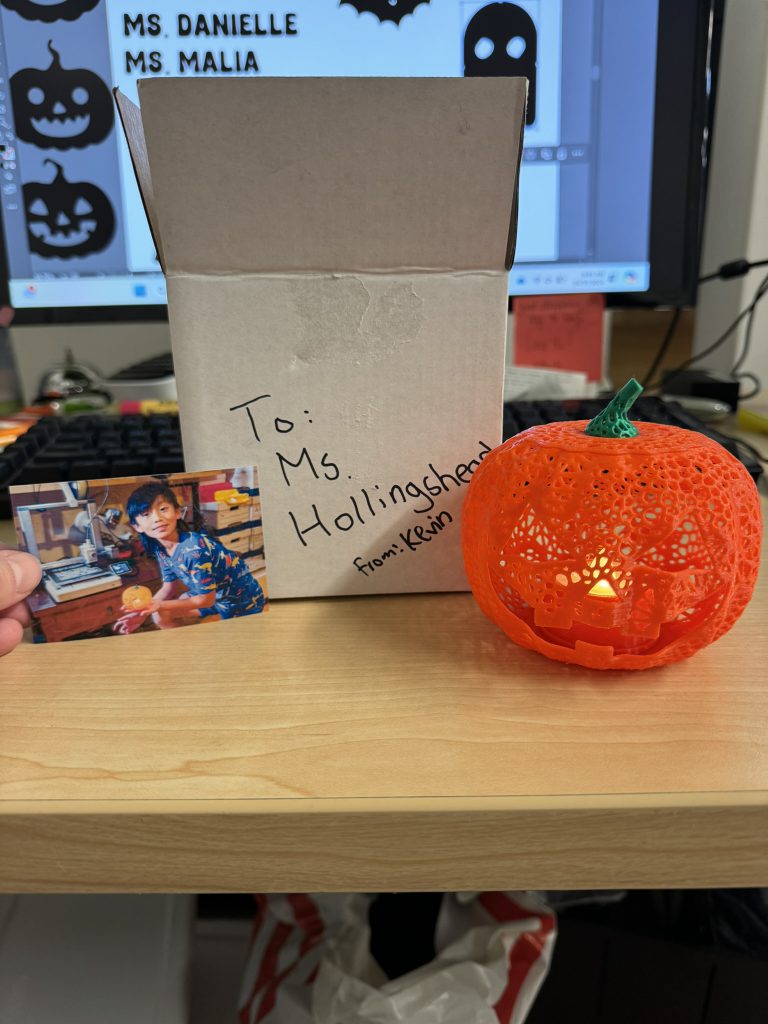
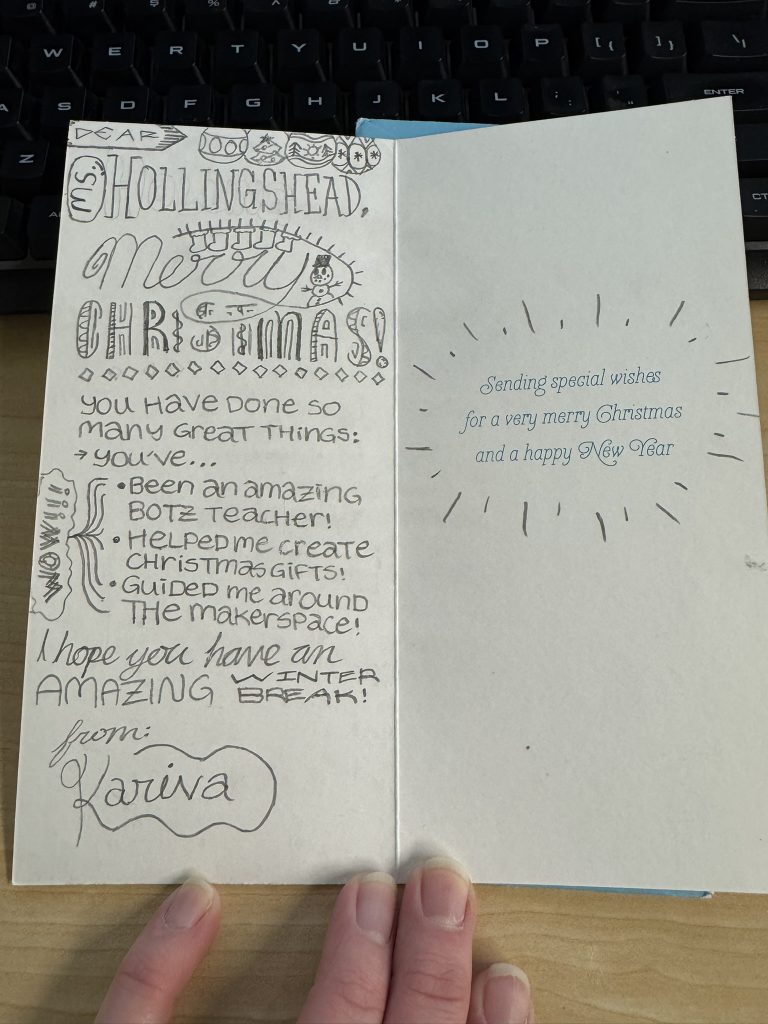
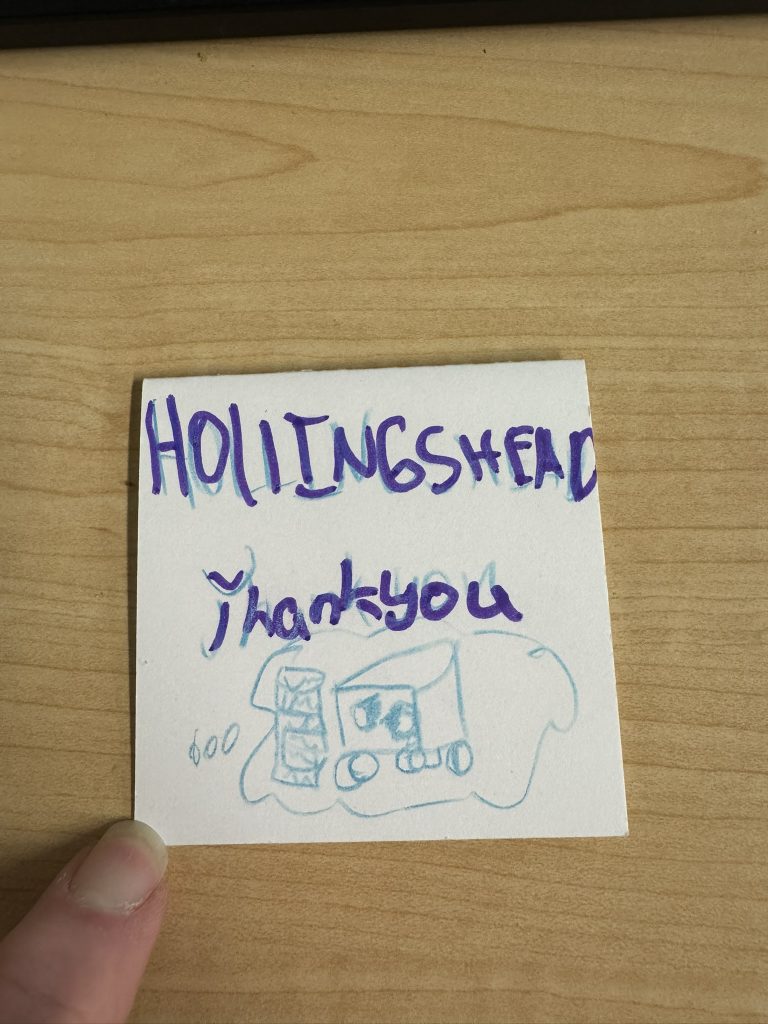
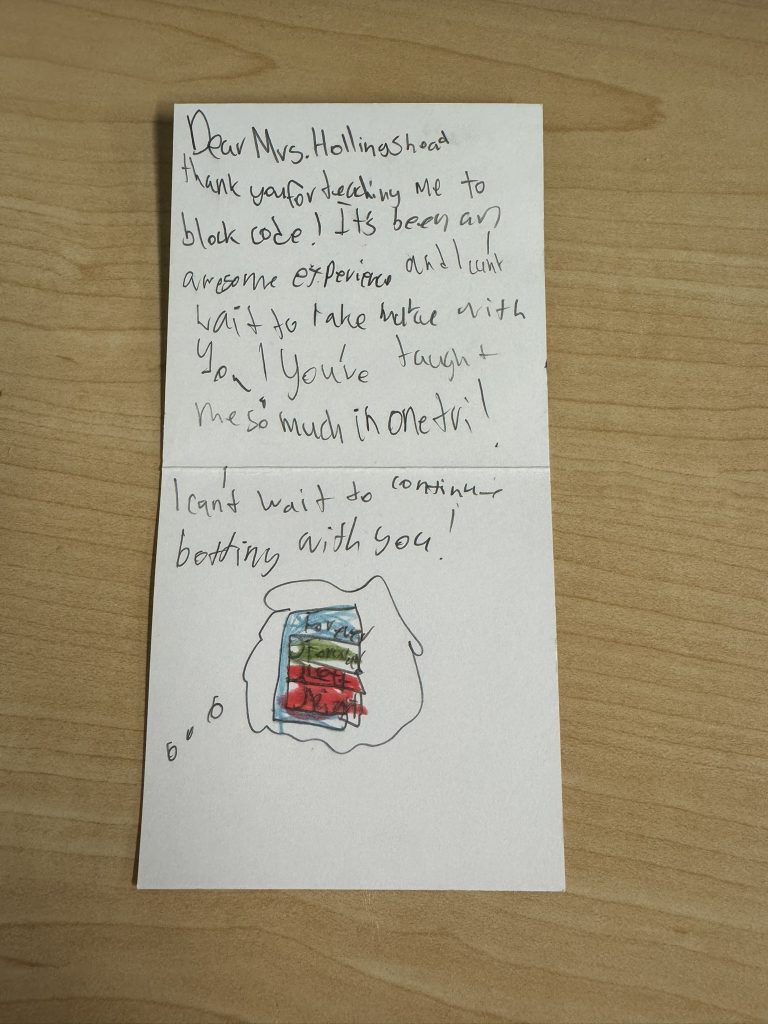

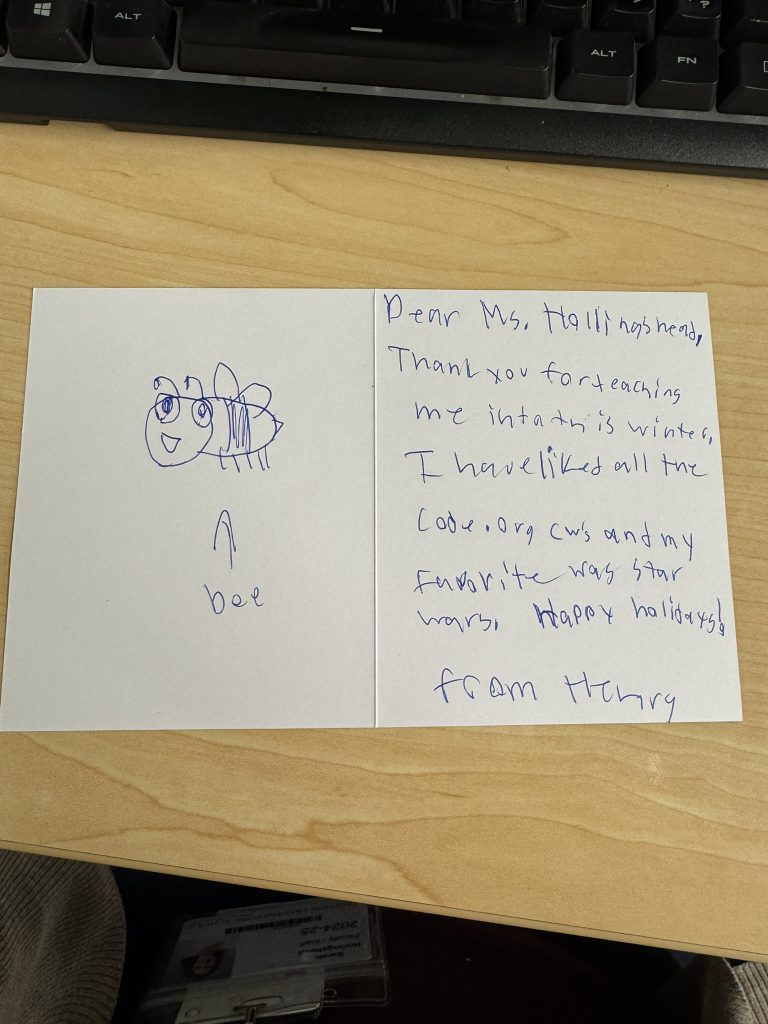
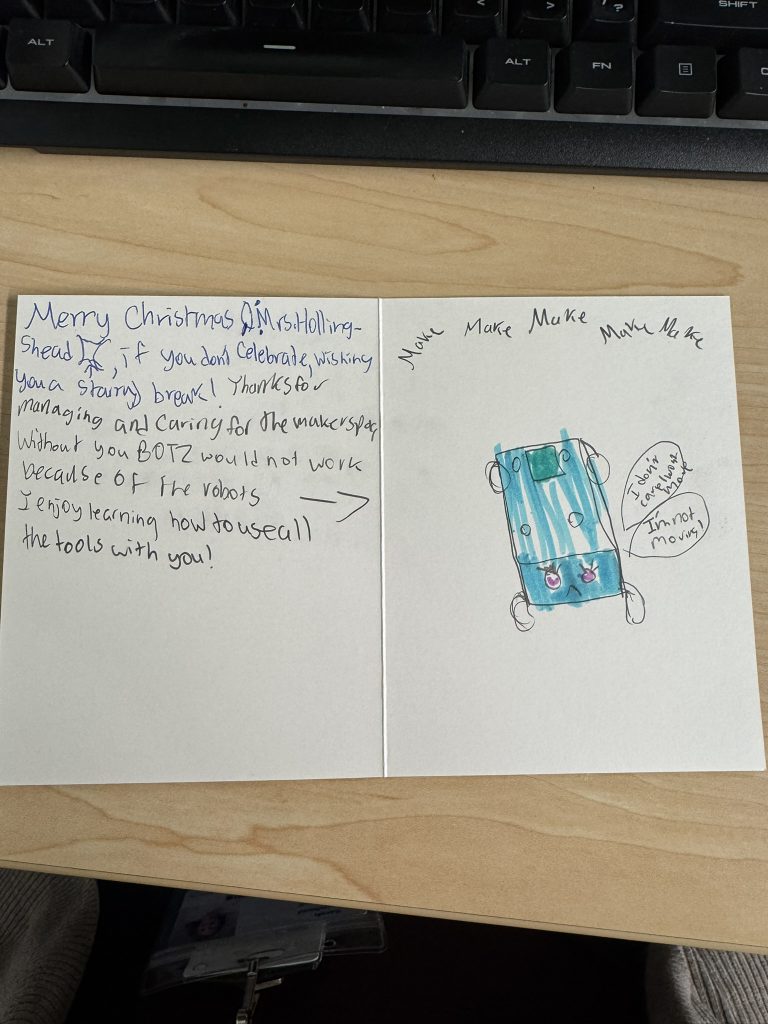
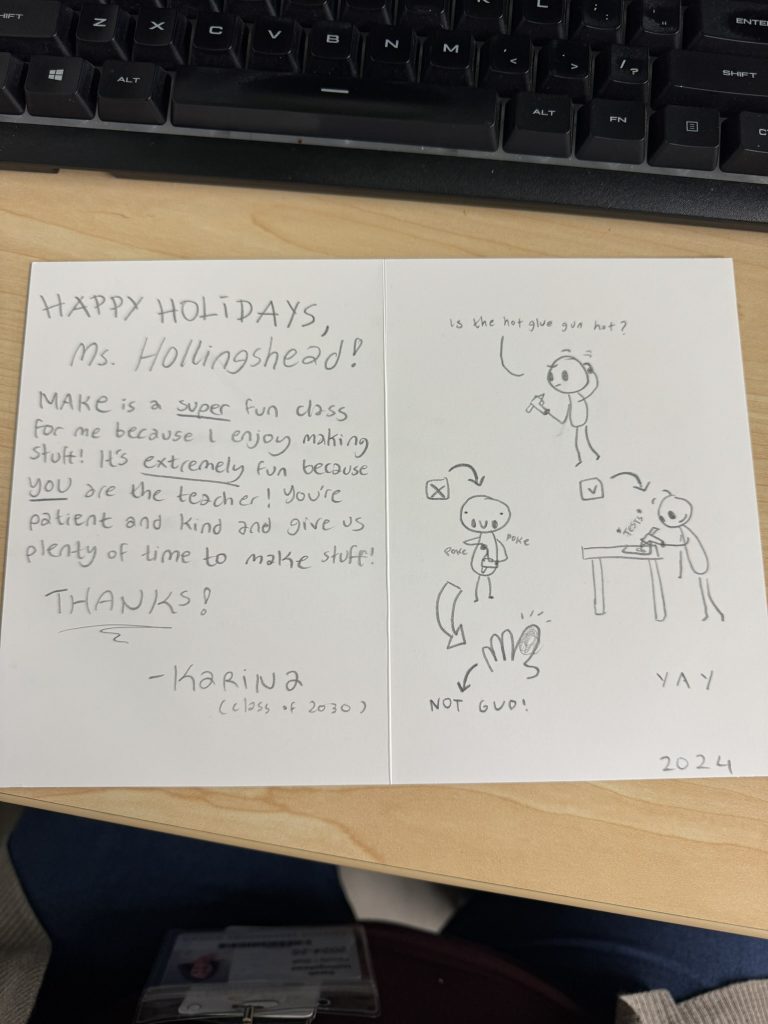
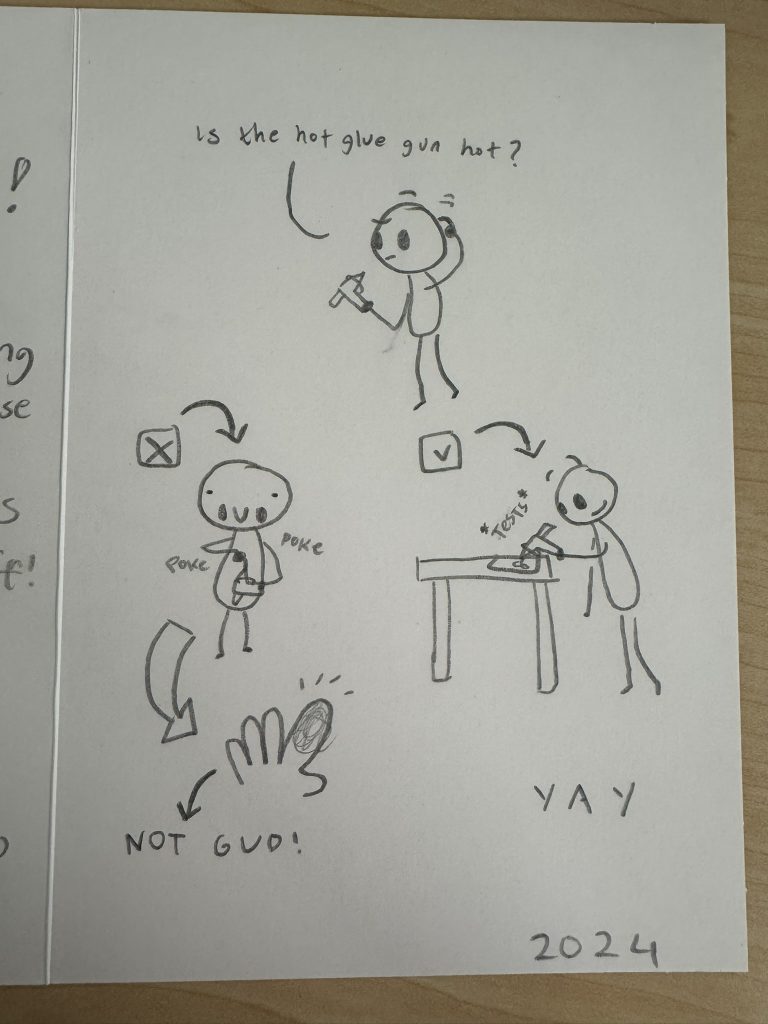
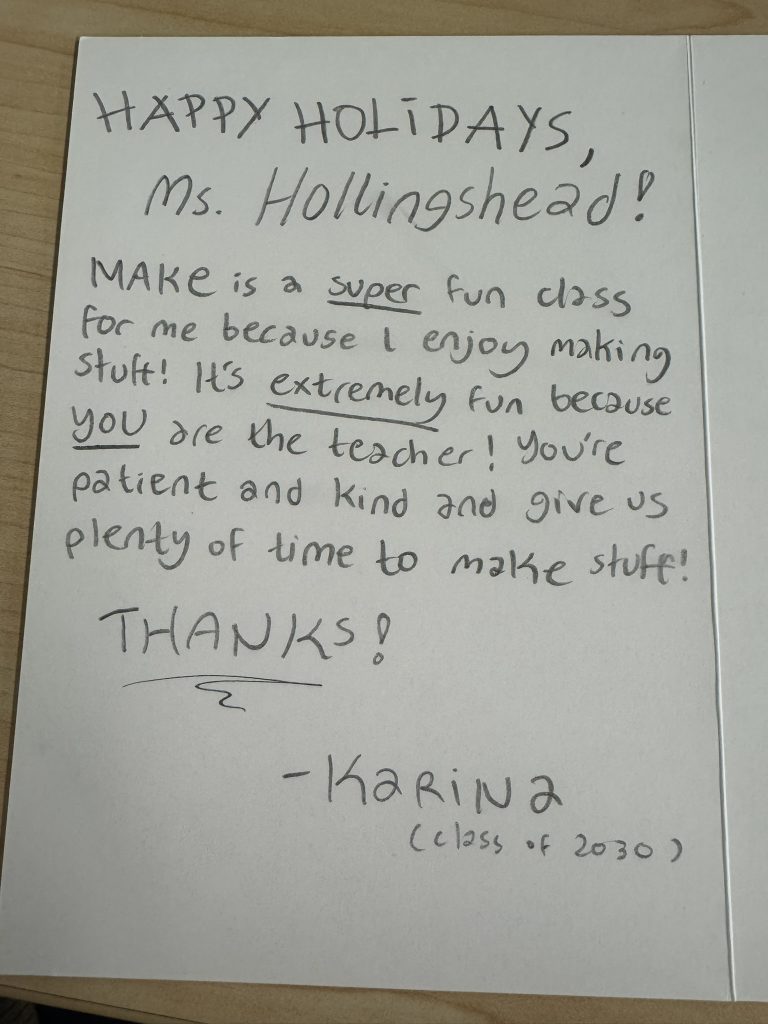
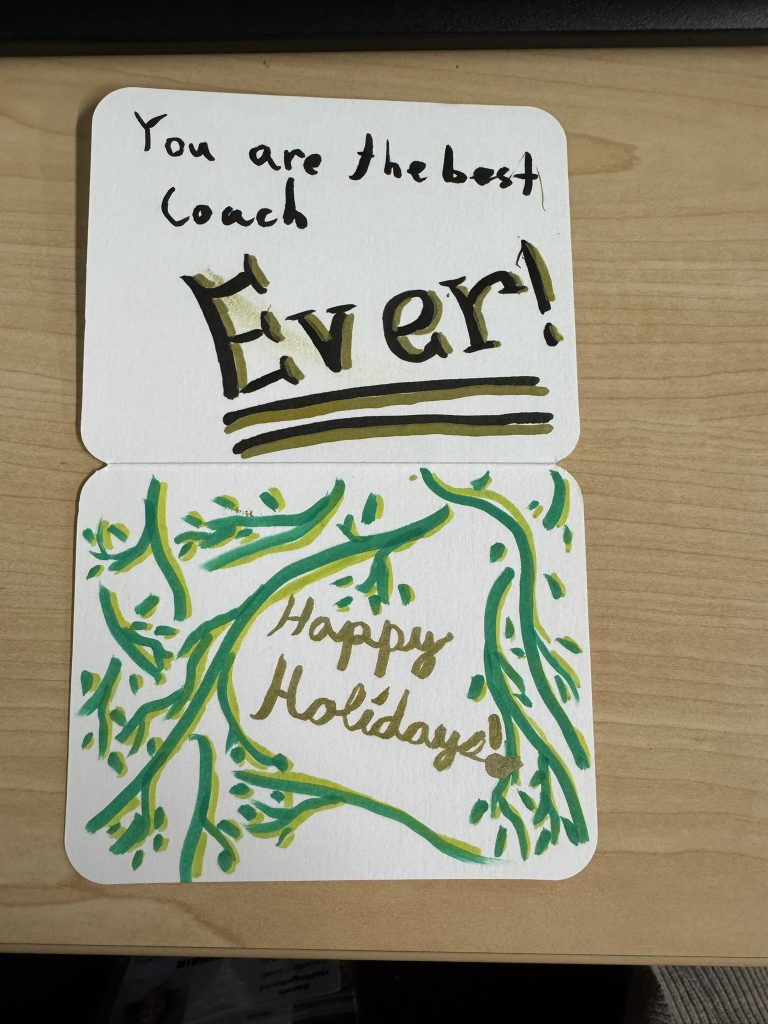
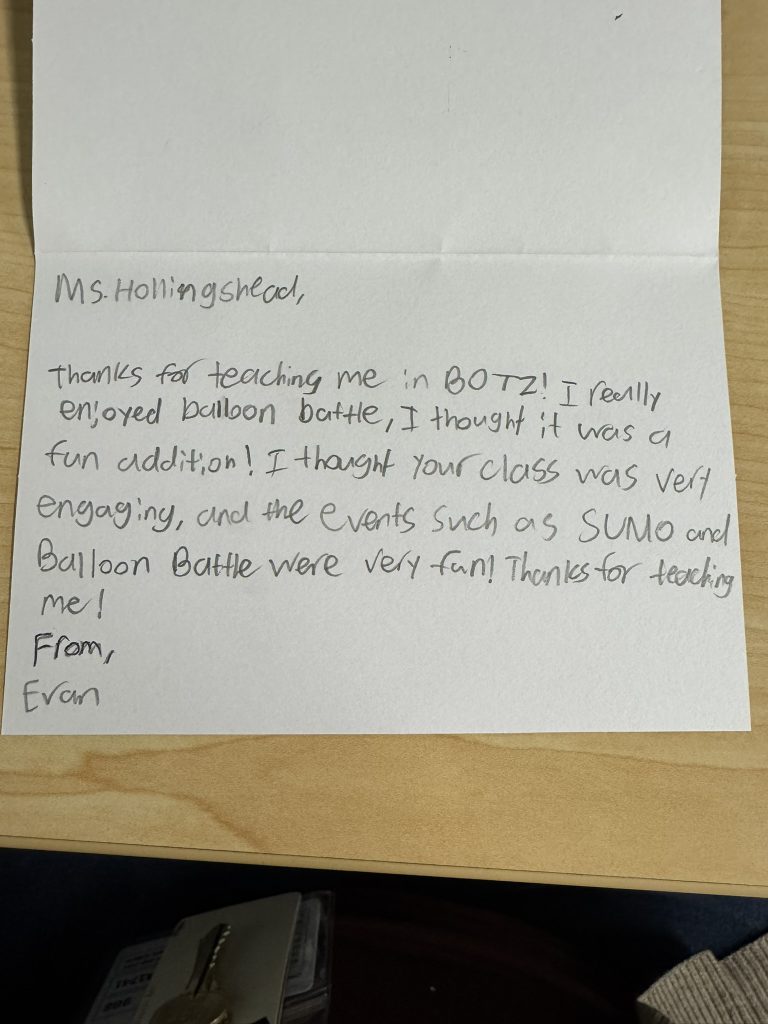
And sometimes I have even appeared in student work for LT1 for their EPS Myth projects. I’m always incredibly honored when students incorporate me into their stories!
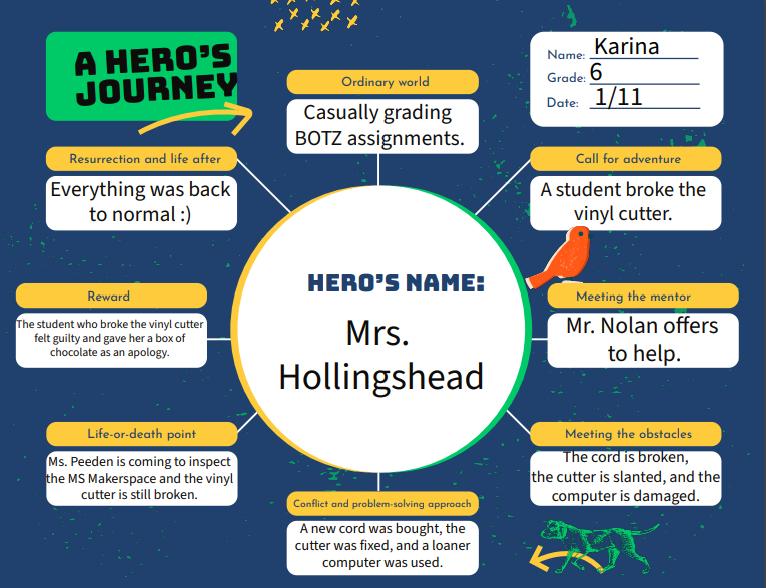
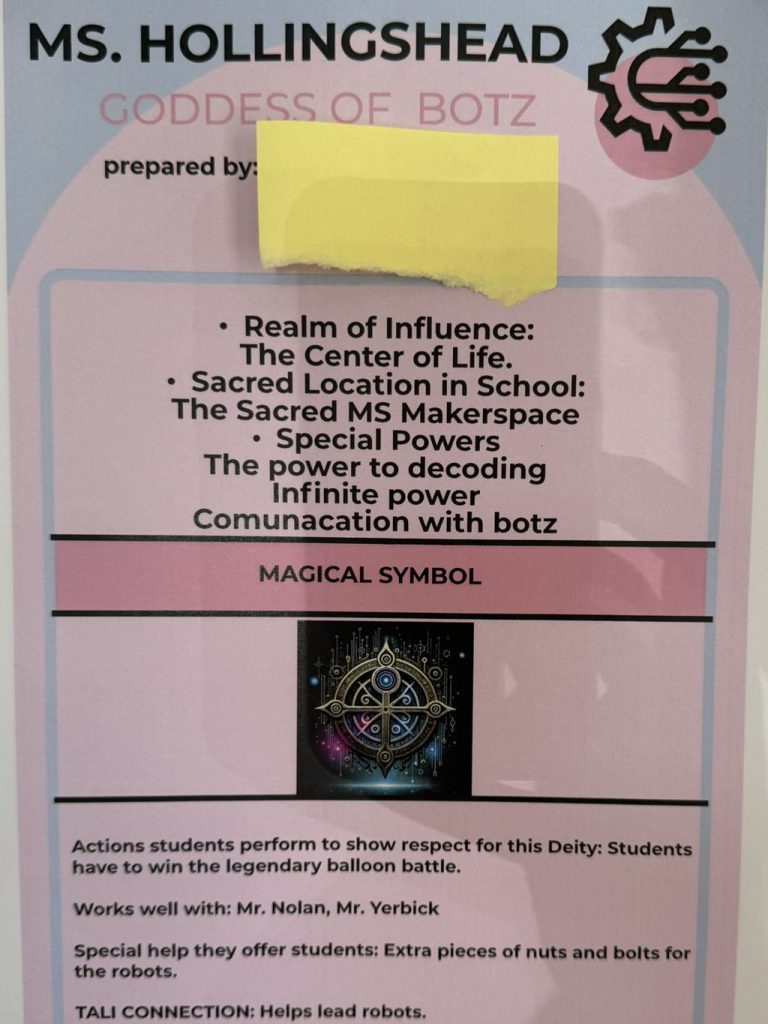
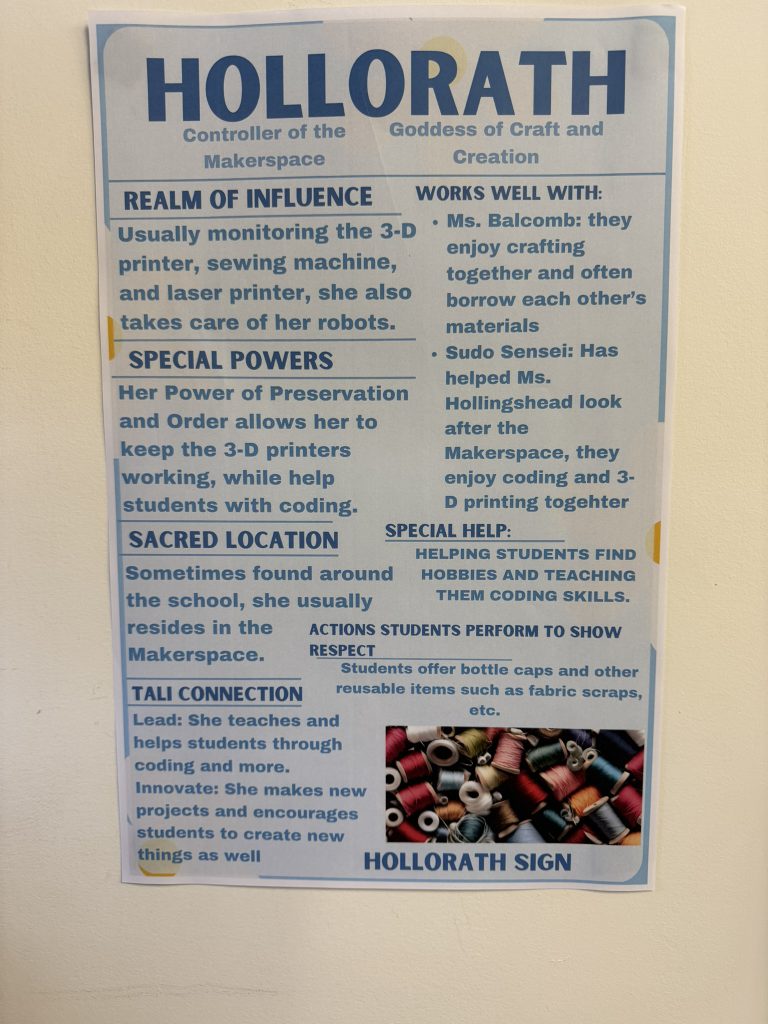
Finally, a story by Arya N. about me, the Goddess of technology, feminism, and electricity 🙂
(4) Demonstrates cultural competence by promoting inclusivity (i.e., culturally responsive teaching, neurodiversity)
This indicator felt broad enough to be open to interpretation. I chose to interpret it in a way that made the most sense to me. The way I interpreted it, and what you can read about in this section, focused on how I use best practices in education, as well current student culture, to hone my practice so that it is inclusive and relevant to young people. Inclusivity in particular is a core part of my teaching practice and philosophy. As someone who is neurodiverse and a woman in a male-dominated discipline, I have felt excluded many times in my life, both in school and in the work place. Helping students feel empowered and included is important to me.
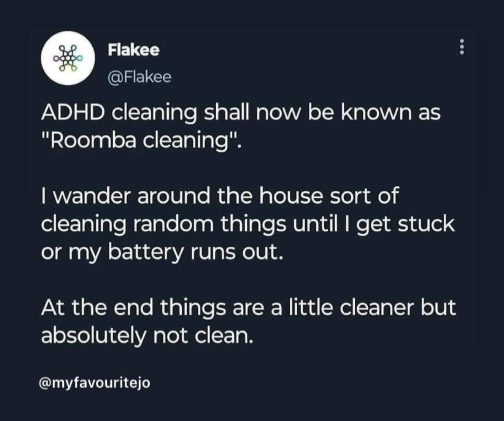
One way I do this is by offering students a variety of ways to engage with the content in my classes and show their knowledge. A good example of this is in my BOTZ class. Typically, I give direct instruction on a programming topic and have students show me they can program their robot to do the basic task, then I offer multiple ways to extend the learning and allow a “choose your own adventure” style class for them to explore their chosen extension topic. In the examples pictured below, the primary skill was “moving with precision and purpose,” in which students were to use the skill of sequencing to program their robot to drive in a perfect square. The extension options for this were to turn their robots into an artist (draw-bot), build a maze and program your robot to navigate it, or just have it drive in different shapes.
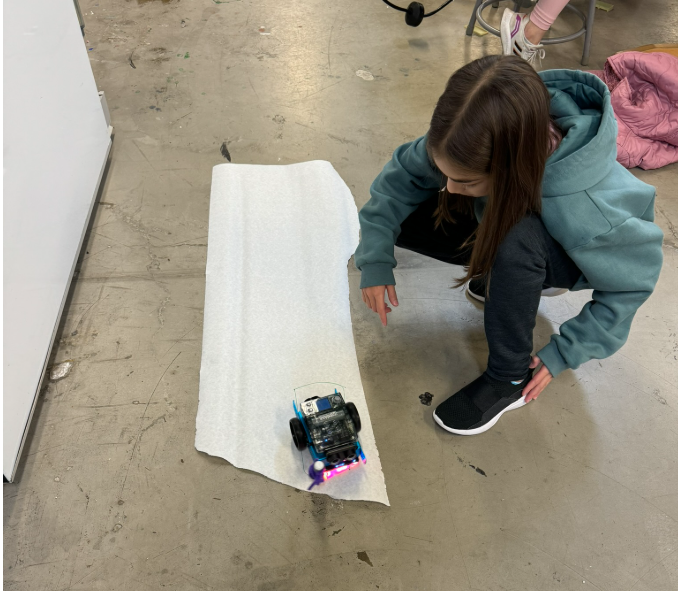
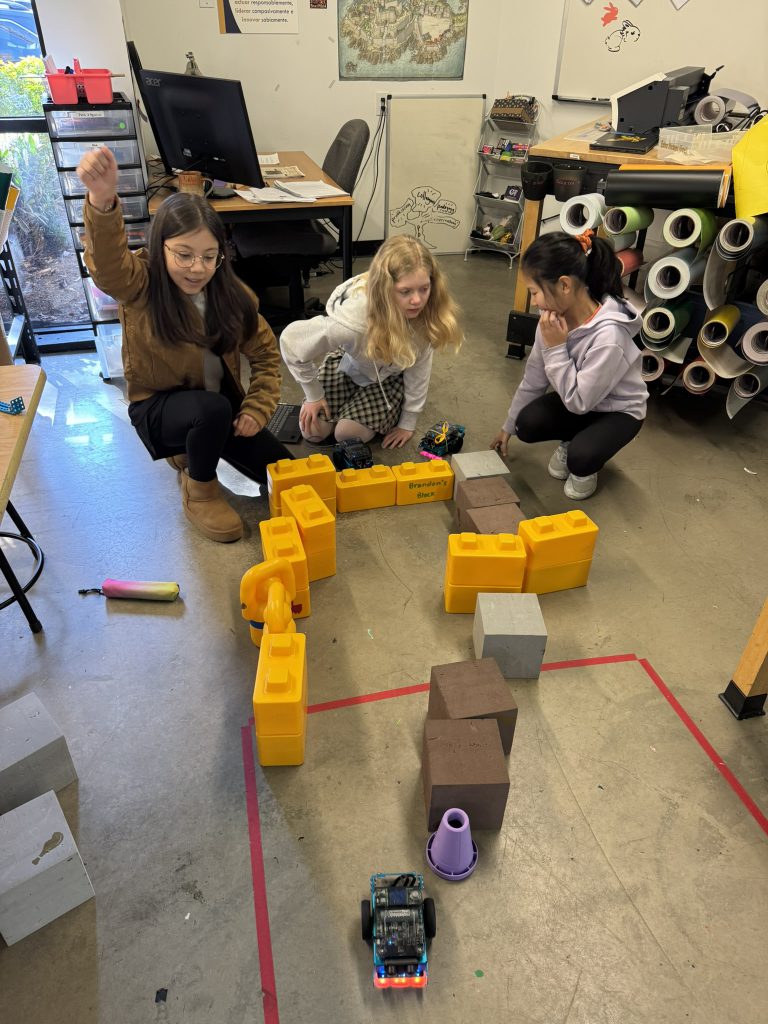
Another example from MAKE is the planning process I assign when we are starting a design challenge. I always offer students the option to work digitally in OneNote, write their plans on paper, or do a combination of those methods.
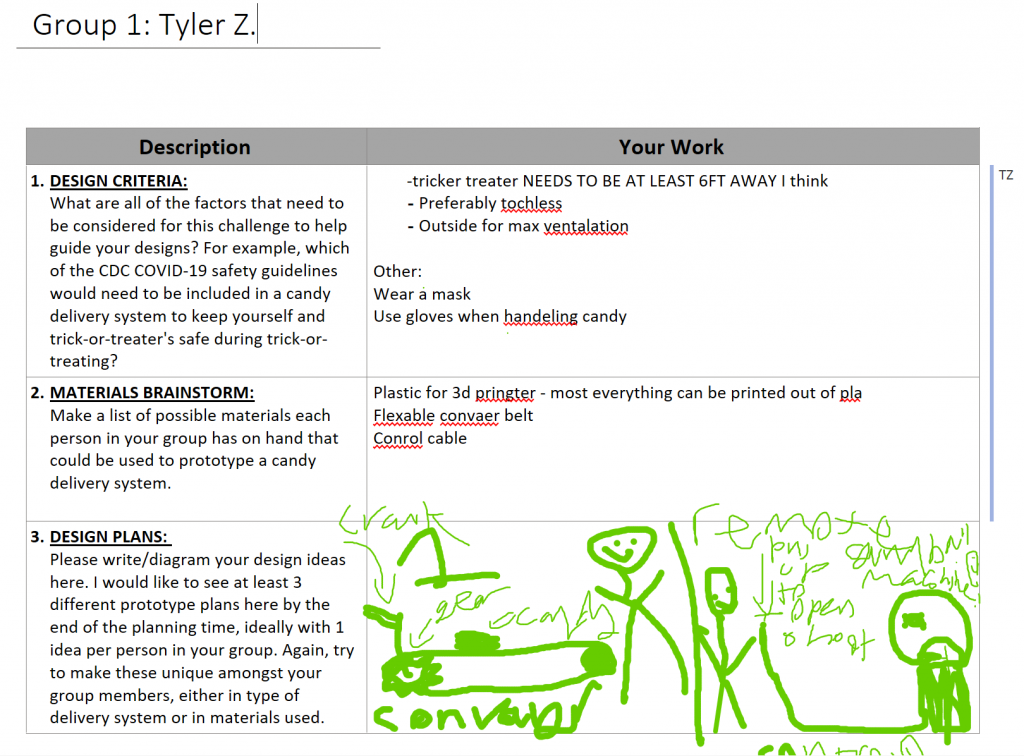
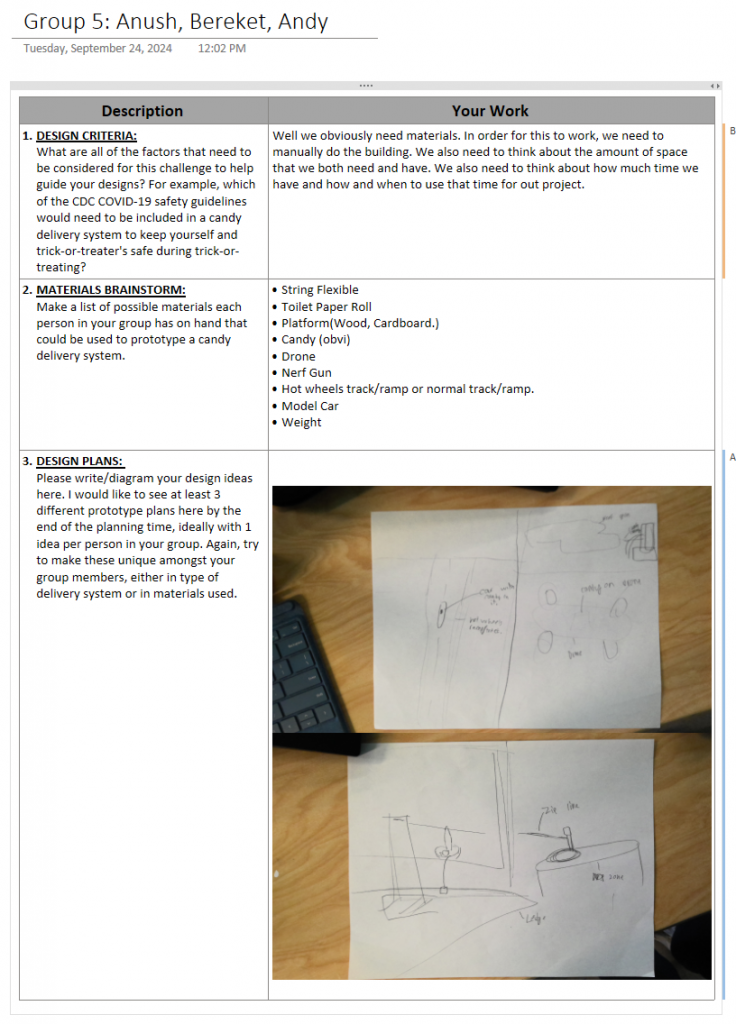
Incorporating a variety of modalities for learning in my classroom is another practice I put a lot of effort into. In the makerspace, I have prepared and employ multiple modalities for students to learn the equipment. This not only helps me when I am short on time to teach as many students as come into the space, but also offers them an opportunity to choose their preferred method of learning. I have written instructions hanging by each machine in the makerspace, I am present to help them read through them or do small group verbal instructions, and I am currently working on recording videos of my design process so that students can view the verbal and visual instruction at their leisure.

In addition to focusing on inclusivity and incorporating teaching methodologies for neurodiverse students, I also try my best to stay on top of what’s happening in our culture and new trends in the teaching community. More than ever, I have found myself lost in terms of the lingo that students are using, but when I joined TikTok in 2020 during quarantine, I discovered a wealth of resources to help me keep on top of not only current events and new teaching strategies, but also what students are seeing and what’s trending for them so I can better understand events and what’s being said in my classroom. Mr. Lindsay has been instrumental in helping me stay on top of the “brainrot” lingo I am hearing in the classroom. Following his page has helped me understand what the terms students are throwing around mean, and also where they come from and what the context is. This has helped me on many occasions educate students on terms that are problematic, and more often than that, capture student attention (along with groans and laughter) when I use the lingo back to them.
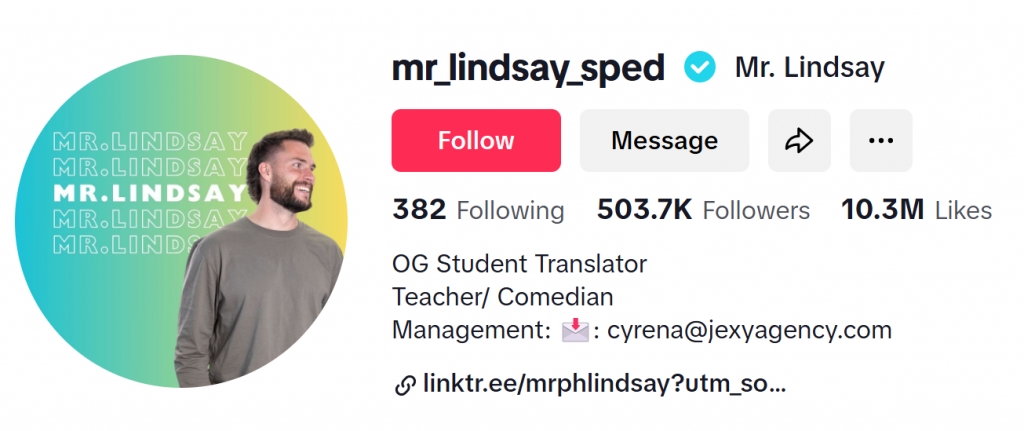
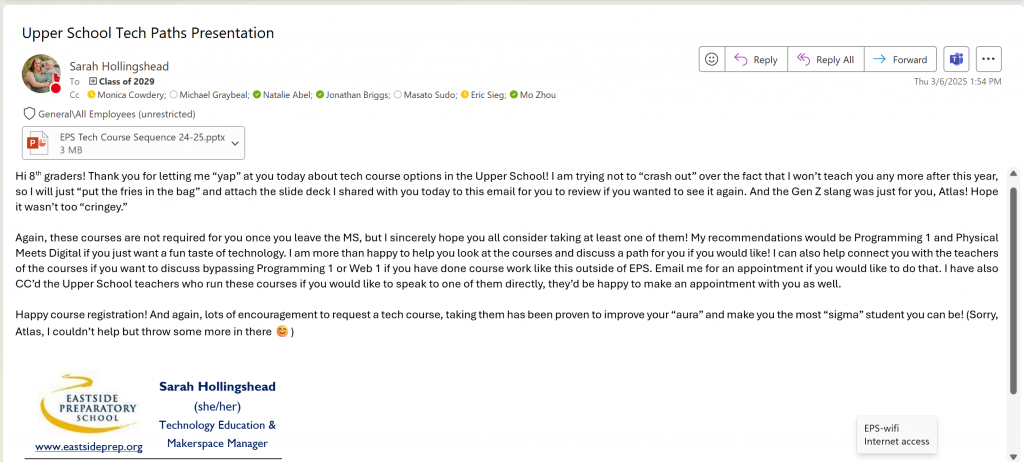
One application of this knowledge happened in my WEB and study hall classes. Kate Lewellen taught those in our discipline a method of tracking where students were at during work time using colored clothespins.
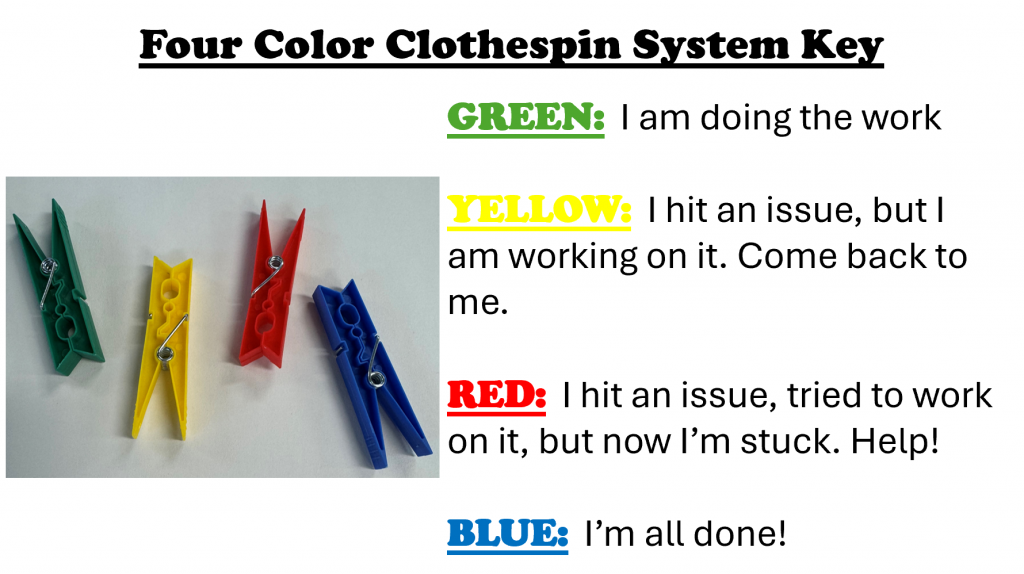
This year I incorporated this strategy into my classes, but I wanted to put a fun spin on it, so I tried to translate the key above into Gen Z/Alpha speak. When I had a couple of students in my study hall look it over for accuracy, Teddy V. informed me that I needed his help, so he and Riya J. shooed me from my chair so they could get to work.
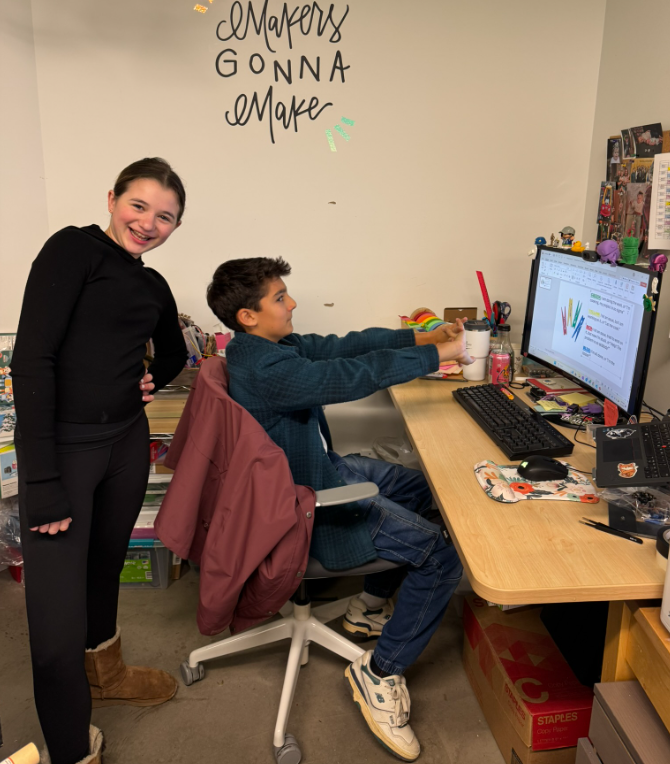

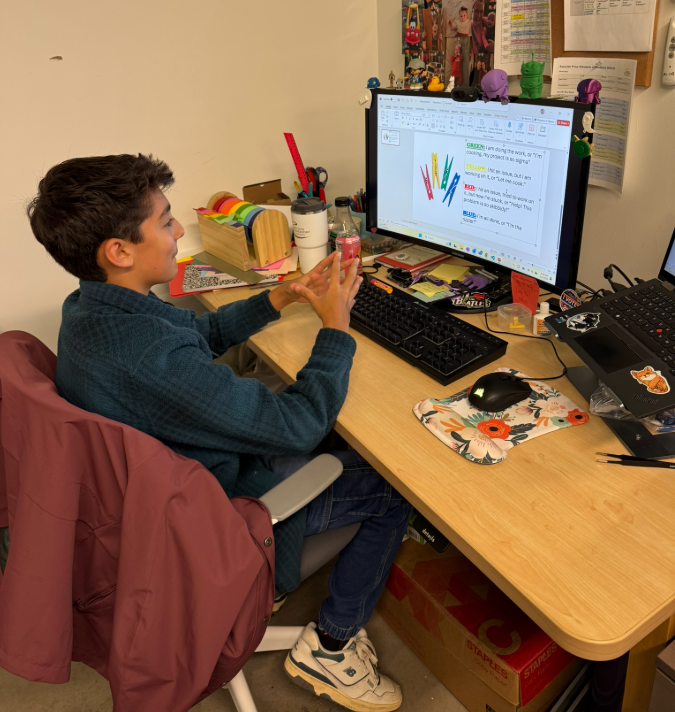
This is what they came up with, and it has been a source of fun and laughter, but also some debate, in my classroom.
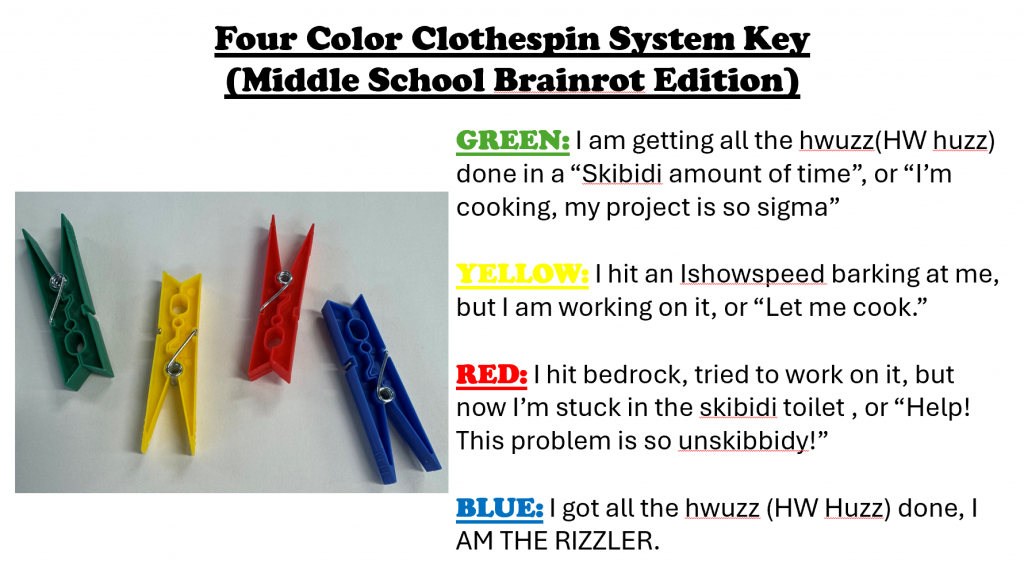
In addition to the “brainrot” edition of my clothespin system, we also discuss other cultural issues popping up around technology, such as the rise in AI tools. In addition to discussing how we can and shouldn’t use these tools in the classroom, we also explore the different tools that are available and spend time experimenting with them. One assignment I gave this year was inspired by an activity Jonathan Briggs shared with Sarah Peeden which we did in our opening meetings in August 2024. I ask students to use an AI tool of their choice to create something related to the class. Students had a great time making a variety of different images, songs, and poems related to our class content! We then spent time sharing our work and discussing how the tools students used could help them in their classes and what their experience was using them. Some examples of what came out of this class session are below:
A poem about web design using ChatGPT
“Building Dreams in Code”
Click, tap, type away,
We build the future every day.
With colors bright and buttons neat,
We craft a world beneath our feet.
A website starts — a simple plan,
A sketch, a dream, a clever scan.
Pick your colors, pick your theme,
Web design’s like building dreams!
HTML’s the bones inside,
It gives your page its strength and pride.
CSS will paint it right,
With fonts and colors bold and bright.
Need a menu? Need a slide?
JavaScript will be your guide!
It makes the magic come alive,
With clicks and tricks that dance and dive.
Mistakes will happen — that’s okay!
Fix and learn along the way.
Each error’s just a hidden key
Unlocking your creativity.
So dream it up, then code it true,
The web is waiting — built by you!
A song about web design using Udio
Audio file is linked below for your listening pleasure 🙂
“Crafting the Digital Canvas”
[Part 1]
[Verse 1]
Welcome to the world of web design
HTML, CSS, it’s all so fine
JavaScript makes the sites come alive
Color, layout, let’s make it thrive
Headers, footers, and a navigation bar
Responsive sites, you’ve come so far
[Chorus]
Web design, web design, web design
Create your site, make it shine
[Verse 2]
Drag and drop or code with care
Images and fonts, add some flair
A good UX makes the user stay
Mobile-friendly all the way
Web design is like making art
Every project shows your heart
[Chorus]
Web design, web design, web design
Create your site, make it shine
[Bridge]
Designing pages, piece by piece
Your creativity will never cease
From simple blogs to grand e-commerce
The web’s a place where you converse
[Chorus]
Web design, web design, web design
Create your site, make it shine
From <https://www.udio.com/songs/mS44ne3aFWAXjgZvrcHFAF>
And a picture of a website designed by a cat from Copilot

By weaving inclusive practices, neurodiverse-friendly methods, and culturally relevant content into my teaching, I strive to create a learning environment where all students feel seen, heard, and empowered to thrive.
(5) Designs a classroom culture that promotes preparedness, engagement, self-advocacy, perseverance, and collaboration
I often hear from students how excited they are to take my classes, both because they have a connection with me and because the content of each class is exciting for students. However, they quickly discover it’s not just “playing with robots” all day, and they need to develop the skills of preparedness, engagement, self-advocacy, perseverance, and collaboration to get to the point where it can be more about “playing with robots.” The part of my job I focus on building these skills the most in is the Makerspace. Depending on the day and what is happening in the space, I can have anywhere from 20-50 students in the Makerspace at once. I typically have every Middle School student in there to learn the tools at some point in the year, and the Upper School students are coming back to see me and use the space more and more for their projects.

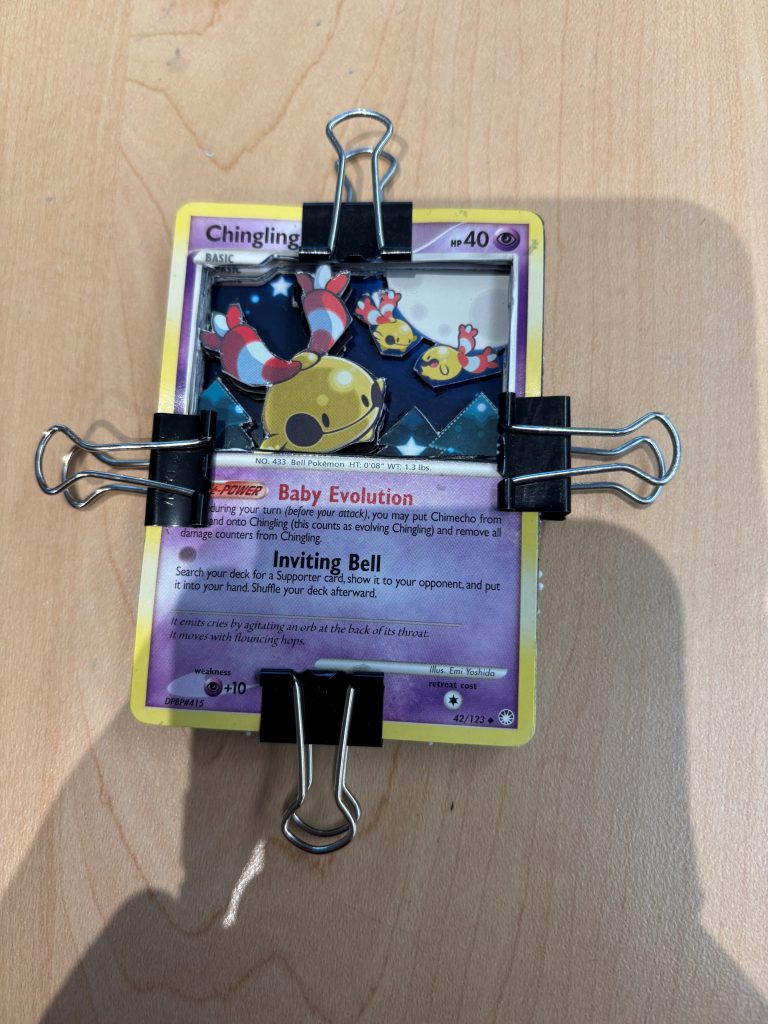
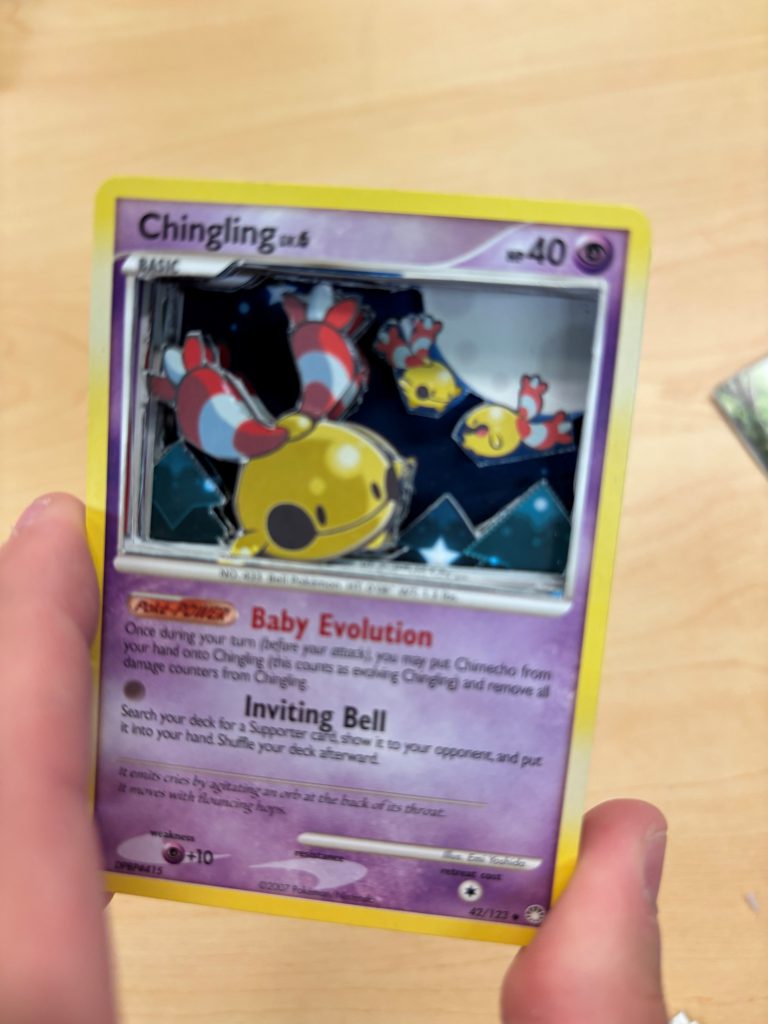
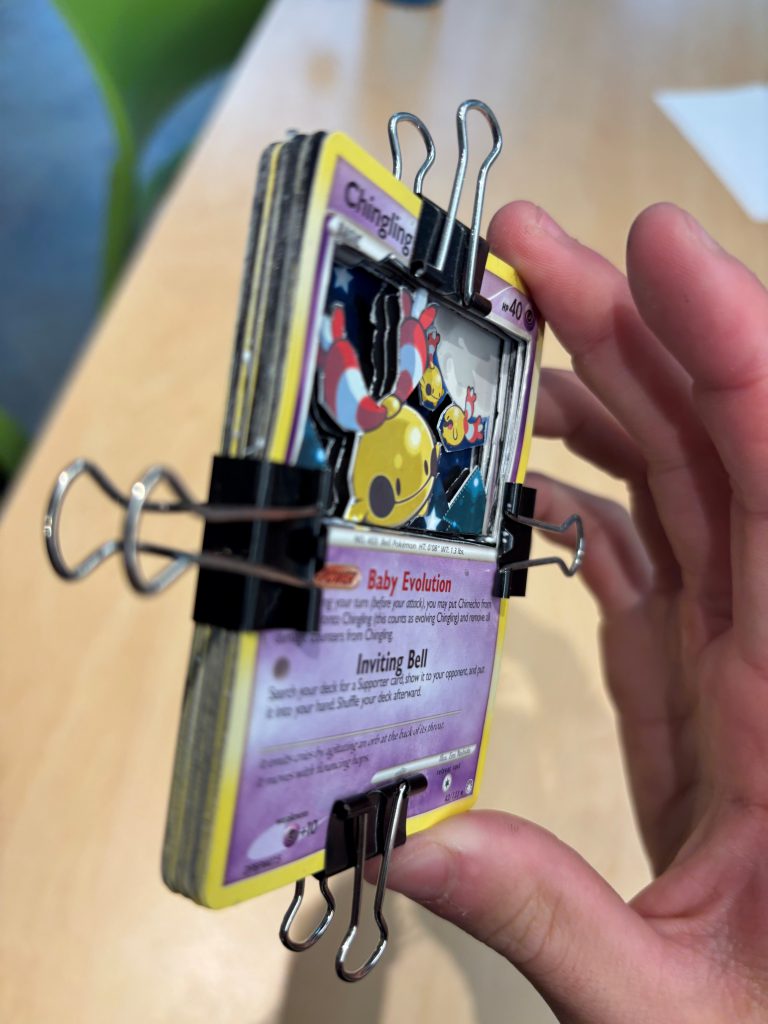
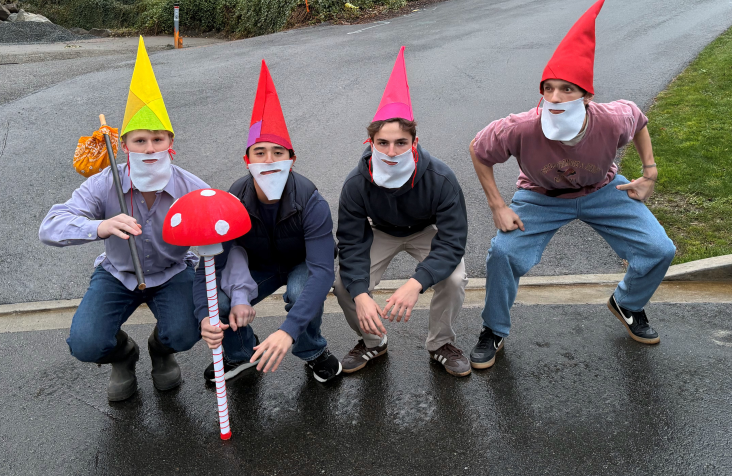
However, I quickly realized the biggest problem I had when I opened the MS Makerspace was how to teach all of the MS and much of the US students how to use the equipment and materials in my classroom when I am typically the only person here to do that. So, I iterated on the certification system we’d been working on in our discipline for a few years prior. The Upper School system has a fewer number of steps to be fully certified and there are slightly more advanced skills listed for those machines, so I used my knowledge of middle school students and scaffolding skills to build our a certification system with 5 steps of simpler skills. If you want a closer view of what skills are listed out in each machine, you can find the files of my posters below.
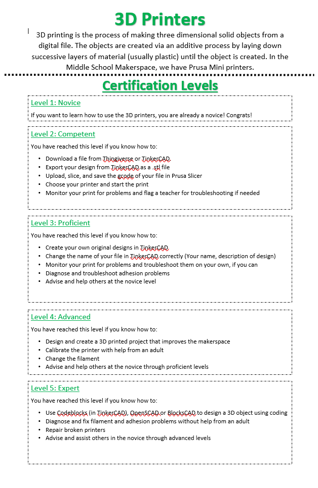
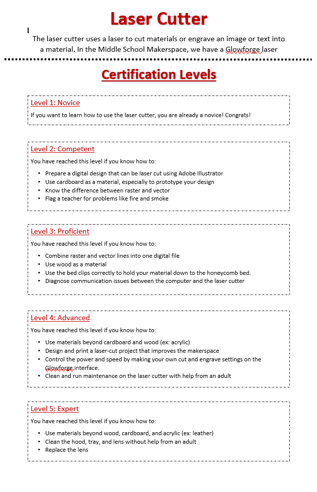
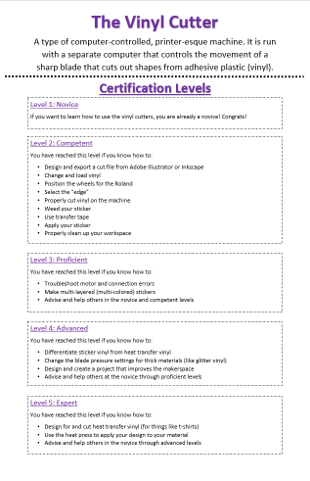
Once the scaffolding was done, I made posters with the skills needed to reach each level of certification, printed them on 11 x 17″ paper, laminated them, and hung them next to the machine they belong to. My aim was to make the skills students needed to reach each level very clear and transparent so students could track and make a plan for advancement in their skills independently.

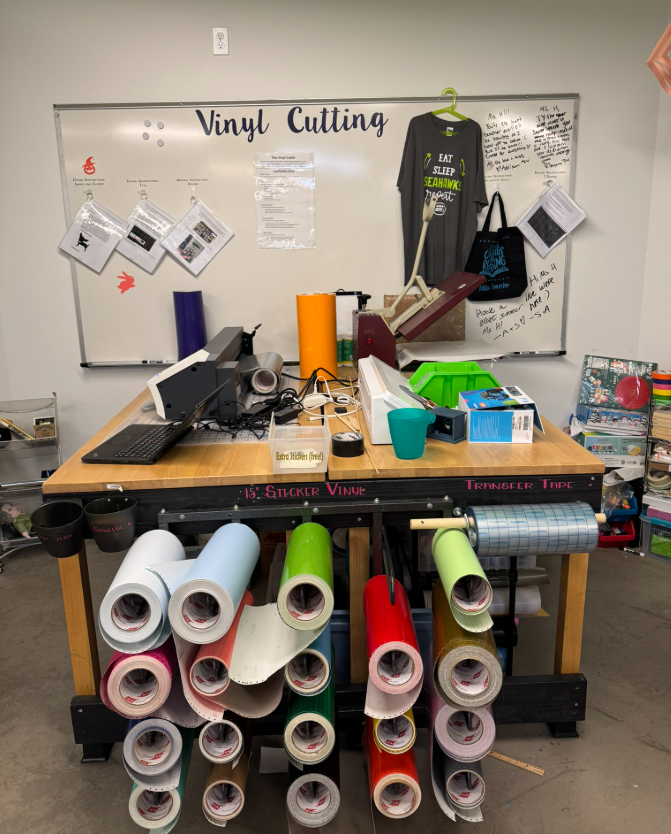
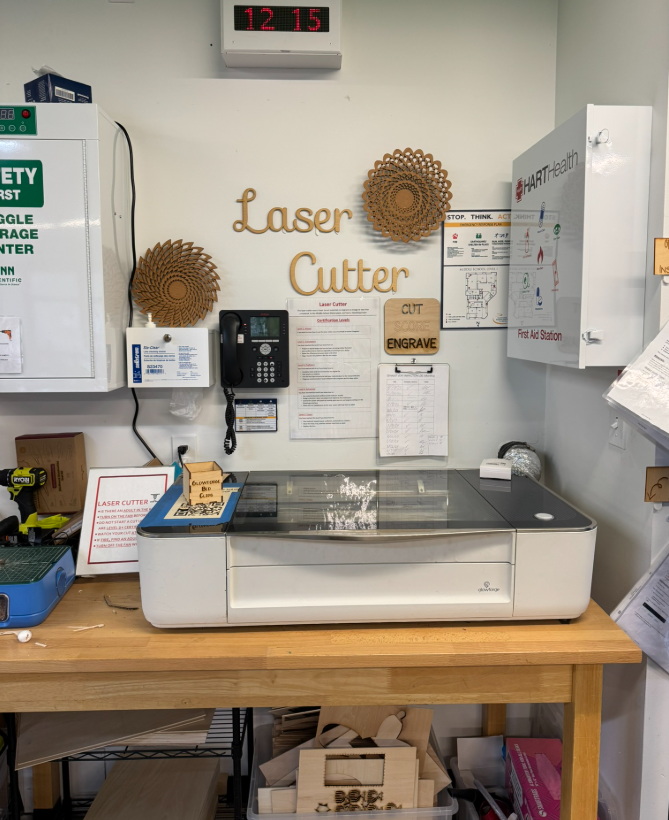
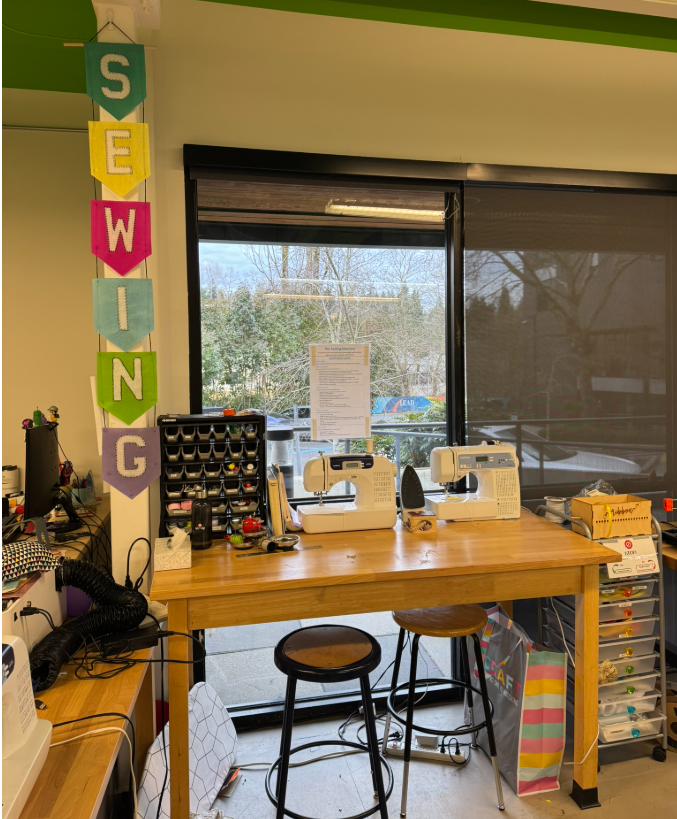
In addition to the level posters, I made sticker charts for each MS grade, as well as faculty and staff, to track their certification level. This serves two purposes: one, students know where they are and how many levels they need to work through to be fully certified, and two, so other students and adults can see who knows how to do the skill they are working on and can ask them for help if I am unavailable.
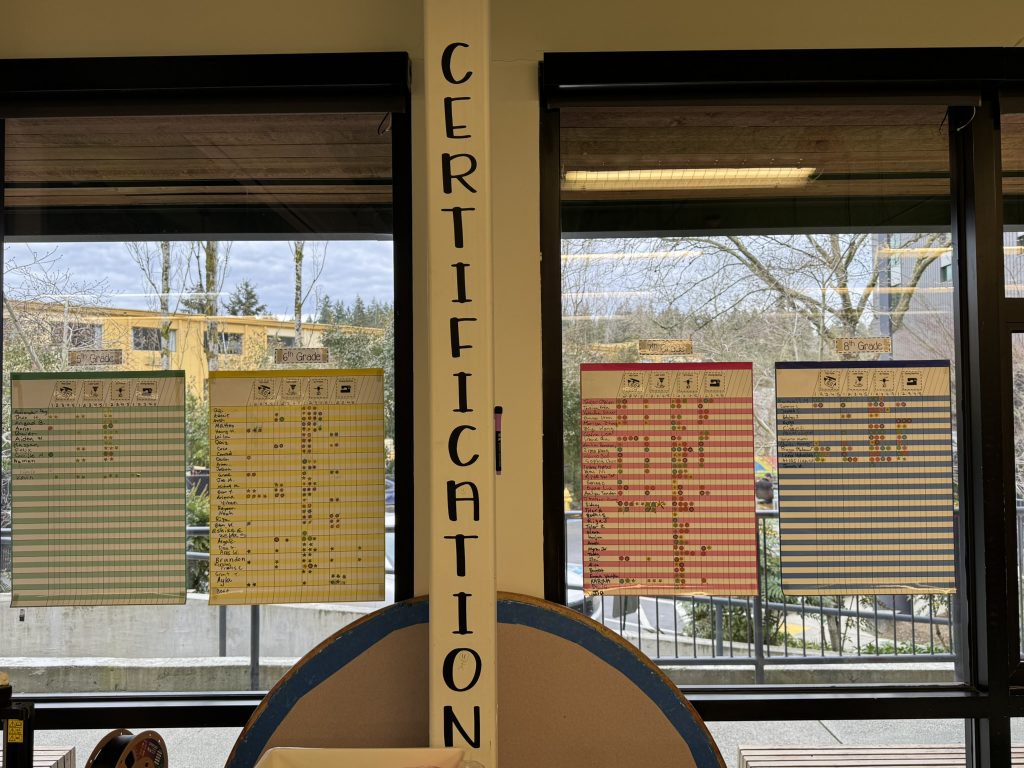
The second big part of this system develops students’ self-advocacy skills. I leave the tracking and movement of levels primarily in the students’ hands, while still requiring a skill check from me or another trained adult to make sure they have actually met the requirements of each level. I used to try and keep track of who was where in this system, but it became a lot of work for me to do so. The procedure I developed to address this is requiring students to approach me when they feel they’ve met the skills for a level. We then find a time that works for us both to do the skills check, and I have them send me a meeting request for that time. This not only develops self-advocacy, but also allows me to teach or reinforce the valuable tech skill of making meeting requests. Once we meet and go through the skills check, I give the student a sticker for their chart. Then we review which skills are next for that machine and I help them make a plan for how to learn and show competency with that skill during our next skill check, if advancement is something they want to continue.
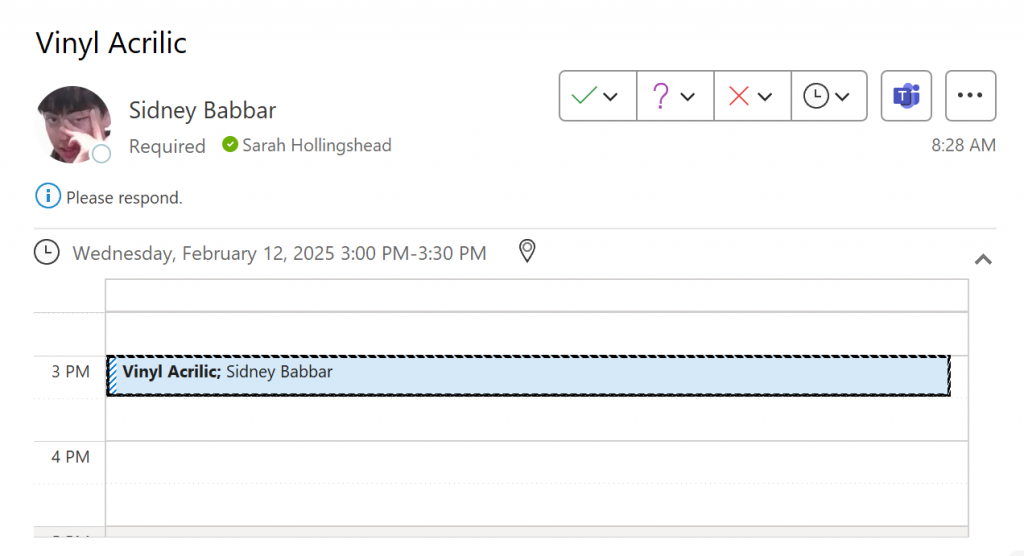
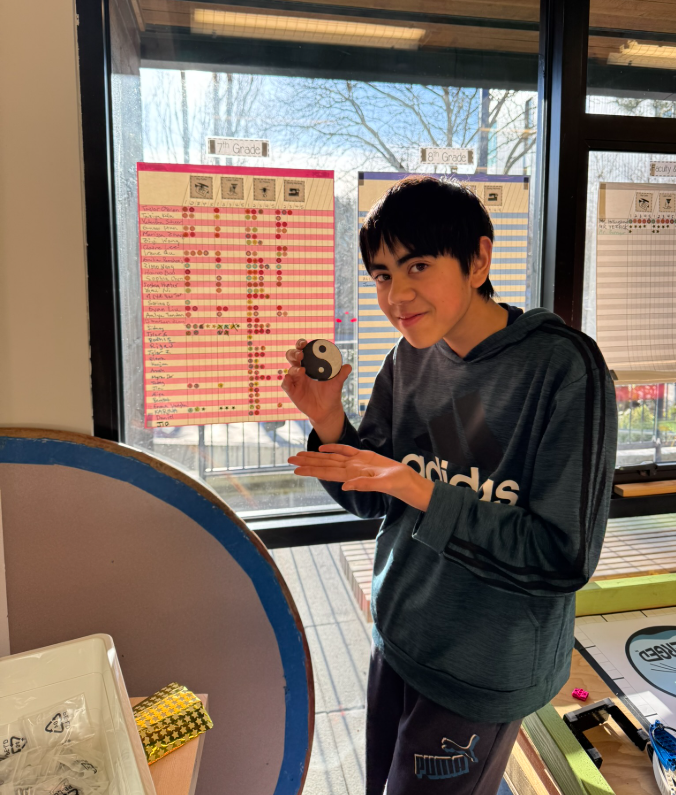
This whole process takes a lot of self-advocacy to track their progress and make appointments with me, collaboration with me and/or other students as they are learning each set of skills, preparedness for their “quiz,” and engagement with the tool or skill they’re trying to learn. I also require students to read through my tutorials when they are learning and try on their own before I will help them. This takes a significant amount of perseverance for many students when they get stuck and have to refer back to the instructions before I will show them how to get unstuck.
This process has worked so well in the makerspace that I would like to build a similar system for my academic classes. While I absolutely teach and require students to meet the skills of preparedness, engagement, self-advocacy, perseverance, and collaboration, I believe there’s room to expand how I track and support their growth. If I can break each unit down into a set of certification steps—using standards-based skill tracking and providing specific ways to reach an “above standard” grade—I can better support students who are ready for additional challenges. This system would not only track a student’s journey through my courses, but also give them and their parents a clearer picture of what they can do, where they’ve met or exceeded standards, and how to improve in areas they haven’t yet mastered. An example of my thinking about this, using Adobe Illustrator for MAKE, is below.
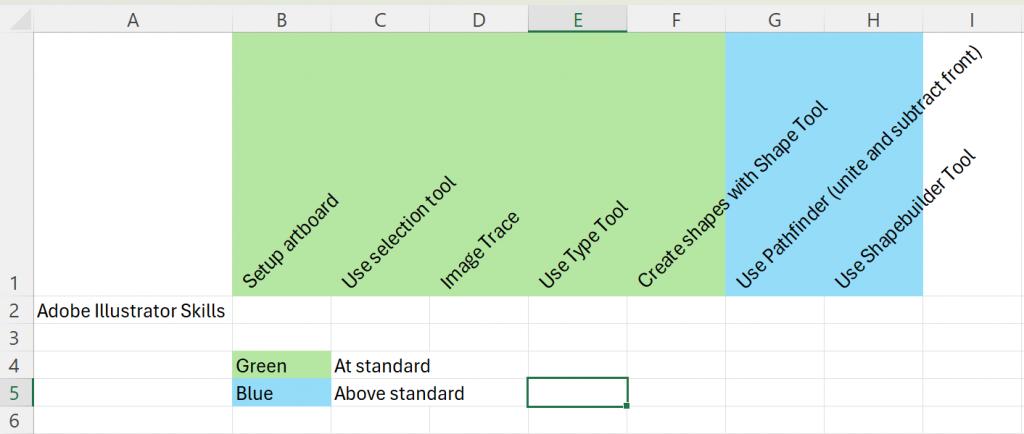
Overall, the certification system I’ve developed in the Makerspace has become a powerful tool for building essential skills like self-advocacy, collaboration, and perseverance in my students. By making expectations transparent and progress visible, students are empowered to take ownership of their learning while developing critical habits of mind. Seeing how effective this has been, I’m now working to adapt the same approach for my academic classes to deepen student engagement and provide a clearer, more individualized learning journey.